Featured
Breast Cancer, Its Link to Abortion and the Birth Control Pill
By Dr. Chris Kahlenborn
Based on six years of study and a meticulous analysis of hundreds of scientific papers and other sources, Dr. Chris Kahlenborn documents the effect that abortion and hormonal contraception have on breast cancer, as well as uterine, cervical, liver, and other cancers, and even the transmission of AIDS! Hormonal contraceptive use before the first full-term pregnancy is found to increase the risk of breast cancer by at least 40%. The book gives special attention to black women, to various populations of the world, and to effective steps for prevention. This is a very timely and powerful work.
Breast Cancer, Its Link to Abortion and the Birth Control Pill
Quantity pricing for the paperback only.Based on six years of study and a meticulous analysis of hundreds of scientific papers and other sources, Dr. Chris Kahlenborn documents the effect that abortion and hormonal contraception have on breast cancer, as well as uterine, cervical, liver, and other cancers, and even the transmission of AIDS! Hormonal contraceptive…
Building a Culture of Life with St Gianna Molla
Gianna was a Catholic wife, mother, physician, working mom, and professional woman. She built a culture of life by serving her family, the poor, the suffering, the sick, and choosing the life of her unborn baby. Dr Gianna serves as a beautiful example of how we can surrender our lives to God’s will and achieve holiness.
These are some inspirational resources to celebrate the legacy of St Gianna Molla, a true prolife witness.

No Greater Love
The story of St Gianna Berretta Molla, a modern-day wife, mother, and physician, who fully engaged her faith in her medical practice. In 1962 she faced the agonizing choice between saving her own life and that of her unborn child, and chose to save her child. She is a wonderful reminder that saints still walk among us.

No hay amor mas grande
La historia de Santa Gianna Berretta Molla, una esposa de hoy en día, madre, y médico, que comprometió completamente su fe en su consultorio médico. En 1962 ella afrontó la elección agonizante entre salvar su propia vida y la de su niña no nacida aún, y escogió salvar su hija. Ella es un recordatorio maravilloso que los santos andan todavía entre nosotros.

El amor es una elección
Este documental maravilloso en DVD sigue la vida de Santa. Gianna Beretta Molla, una esposa del siglo XX, madre, y médico, que vivió una vida de devoción plena a su marido, a la familia, y a los pacientes, y luego dió su vida para que la hija que llevaba en su vientre pudiera vivir. Ahora canonizada como una santa católica, ella es un ejemplo brillante de una mujer siendo todo lo que ella puede ser. Este video cuenta la historia de Gianna simple y hermosamente e incluye muchos cortometrajes de la santa, así como entrevistas con su marido y sus hijos.

Saint Gianna Molla
This wonderful biography on St Gianna tells her life’s story, from her childhood, through her professional and family life, and up until the giving of her life for her child. Much of the book is in the form of an interview with Gianna’s husband Pietro, and it also includes a section entitled “Gianna’s Virtues,” the testimony of Pietro for the process of his wife’s beatification.
The Solemnity of the ANNUNCIATION
One More Soul is very pleased to invite you to:
The Mass will include the Sacrament of the Anointing of the Sick and a blessing with a First Class Relic of Blessed Fr. Michael McGivney, founder of the Knights of Columbus.
Monday, April 8th, 2024
Solemnity Mass 7:00 PM
Emmanuel Catholic Church
149 Franklin St. Dayton, OH 45402.
All are welcome to participate in this Mass especially those seeking healing physically, mentally, or spiritually.
Just Look
The picture on this page is an untouched photograph of a being that has been within its mother for 20 weeks.
Please do me the favor of looking at it carefully.
Have you any doubt that it is a human being?
If you do not have any such doubt, have you any doubt that it is an innocent human being?
If you have no doubt about this either, have you any doubt that the authorities in a civilized society are duty-bound to protect this innocent human being if anyone were to wish to kill it? (more…)
Las Cuatro Llaves Para un Matrimonio Feliz y Saludable
Por: Bonnie Borel-Donohue
¿Quién podría ser el mejor ejemplo de cómo amar a su cónyuge que el Máximo Amante, Dios? Pero, ¿cómo ama Dios?
Después de haber meditado sobre esta pregunta, el Papa Pablo VI y el Papa Juan Pablo II discernieron cuatro características claves del amor de Dios. El amor de Dios es siempre: libre, total, fiel y fecundo. Cada llave es también una de las cuatro cualidades esenciales del amor conyugal auténtico. Este folleto le dará a conocer estas cuatro llaves muy importantes para iniciarse, o volver al camino hacia un gran matrimonio. A través de las gracias que vienen con el sacramento del Santo Matrimonio, junto con la oración y recibiendo regularmente los sacramentos de la reconciliación y de la eucaristía, los esposos reciben toda la fuerza y el poder para amarse uno al otro como Jesús ama a su Iglesia: libremente, totalmente, fielmente y Estas son las cuatro llaves para el amor conyugal auténtico. A través de los sacramentos y aprendiendo más acerca de las cuatro llaves para el amor conyugal presentadas en este folleto, las parejas pueden abrir la puerta a un matrimonio más satisfactorio y gratificante.1
L![]() a primera llave es libre–Para que un matrimonio sea feliz y saludable, los cónyuges deben entrar al matrimonio, así como a cada acto conyugal libremente, dándose uno al otro y recibiéndose uno al otro sin coerción, manipulación, fuerza o coacción. Esta llave requiere auto-control y la posibilidad de aplazar o sacrificar los propios deseos por el bien de la persona amada. Aunque la violación marital es una violación evidente de esta llave, vicios más sutiles como la impaciencia, el orgullo y la lujuria también pueden interferir con la práctica de esta llave. Las virtudes de la paciencia, la humildad y la castidad son necesarias, asi como los esposos a menudo tienen que esperar a que el otro esté listo para amar “libremente.” Esta llave consiste en darse cuenta de que cada persona puede tener necesidades físicas, emocionales o trabajos que deben cumplirse, como por ejemplo la mujer necesita de una cierta cantidad de tiempo para hablar y compartir, o la necesidad del hombre de meterse a su cueva un rato a solas antes de que la intimidad pueda suceder.2, 3 Para que esta llave funcione bien, ambas partes deben estar libres de adicciones, incluyendo las adicciones al alcohol, las drogas, el sexo, la pornografía, la co-dependencia, etc.4
a primera llave es libre–Para que un matrimonio sea feliz y saludable, los cónyuges deben entrar al matrimonio, así como a cada acto conyugal libremente, dándose uno al otro y recibiéndose uno al otro sin coerción, manipulación, fuerza o coacción. Esta llave requiere auto-control y la posibilidad de aplazar o sacrificar los propios deseos por el bien de la persona amada. Aunque la violación marital es una violación evidente de esta llave, vicios más sutiles como la impaciencia, el orgullo y la lujuria también pueden interferir con la práctica de esta llave. Las virtudes de la paciencia, la humildad y la castidad son necesarias, asi como los esposos a menudo tienen que esperar a que el otro esté listo para amar “libremente.” Esta llave consiste en darse cuenta de que cada persona puede tener necesidades físicas, emocionales o trabajos que deben cumplirse, como por ejemplo la mujer necesita de una cierta cantidad de tiempo para hablar y compartir, o la necesidad del hombre de meterse a su cueva un rato a solas antes de que la intimidad pueda suceder.2, 3 Para que esta llave funcione bien, ambas partes deben estar libres de adicciones, incluyendo las adicciones al alcohol, las drogas, el sexo, la pornografía, la co-dependencia, etc.4
L![]() a segunda llave es total–El matrimonio sacramental es una vocación, un llamado de Dios y el principal medio por el cual los esposos se santifican. Este compromiso con el cónyuge debe ser total, tomando el primer lugar y viene incluso antes del compromiso con los hijos, la familia de origen, o el trabajo,–lo cual no quiere decir que estos no sean importantes.
a segunda llave es total–El matrimonio sacramental es una vocación, un llamado de Dios y el principal medio por el cual los esposos se santifican. Este compromiso con el cónyuge debe ser total, tomando el primer lugar y viene incluso antes del compromiso con los hijos, la familia de origen, o el trabajo,–lo cual no quiere decir que estos no sean importantes.
Para que el amor conyugal sea auténtico, todo de sí mismo se da a la persona amada, y todo es recibido y aceptado del amado incluso, el cuerpo, la mente, la fertilidad, las finanzas y hasta las condiciones de salud desconocidas en el futuro. Ocultar o mantener información crítica al prometido–(a) o esposo (a) viola esta llave, al igual que los acuerdos pre-nupciales. Estas acciones indican una falta de confianza y la decisión de compartir sólo una parte de si mismo con el cónyuge. Las parejas que intencionalmente excluyen, dañan, enferman o mutilan sus órganos reproductivos, o permiten que su cónyuge lo haga, violarían esta llave. Su don de sí mismo no es total.
Esta llave no significa que los cónyuges deben perder su identidad, que se fundan el uno al otro renunciando a los límites saludables, o que se dejen abusar. Más bien, significa que cada cónyuge aporta su don total dado por Dios de su singularidad y personalidad al matrimonio.
Esta llave implica aceptar que los hombres y las mujeres son diferentes y tienen necesidades diferentes, no siendo las necesidades de uno superiores a las del otro, sólo son diferentes. Por ejemplo, los hombres generalmente tienen una mayor necesidad de ser “respetados” (es decir, no criticados por su esposa) más que sentirse “queridos”, mientras que las mujeres tienen una mayor necesidad de sentirse “amadas”. 3, 5 Algunas parejas han encontrado útil el descubrir los lenguajes del amor de cada uno o maneras en que los dos se sienten queridos. Algunas personas experimentan o sienten amor sobre todo a través del tacto, otros a través de palabras como decir “te amo”, y otros por el tiempo que comparten juntos. Otros pueden sentirse amados si se le dan regalos, o mediante la recepción de actos de servicio, o una combinación de estos aspectos.6
![]() La tercera llave es Fiel–Para que un matrimonio sea feliz y saludable, los cónyuges deben ser fieles. Esta llave implica la promesa de proteger el corazón, los ojos y el cuerpo, reservando el don especial de la sexualidad exclusivamente para la persona amada. Coquetear con otros, que no sean su cónyuge, mirar a otros deseándolos, ver telenovelas en forma adictiva, o leer novelas románticas, ver pornografía, y tener relaciones extramaritales violan esta llave.
La tercera llave es Fiel–Para que un matrimonio sea feliz y saludable, los cónyuges deben ser fieles. Esta llave implica la promesa de proteger el corazón, los ojos y el cuerpo, reservando el don especial de la sexualidad exclusivamente para la persona amada. Coquetear con otros, que no sean su cónyuge, mirar a otros deseándolos, ver telenovelas en forma adictiva, o leer novelas románticas, ver pornografía, y tener relaciones extramaritales violan esta llave.
Una práctica importante para esta llave es evitar las ocasiones próximas de pecado cuidando de no ponerse en cualquier situación con alguien del sexo opuesto solo, donde el potencial de tentación pudiera surgir, tales como almuerzos, cenas, deportes, otras actividades, o socialmente hablar por teléfono, enviar mensajes de texto o chat en el Internet.
![]() La cuarta llave es fructífero–el amor auténtico es siempre fructífero, es creativo y realmente trae más amor y más vida. Cada vez que una pareja casada se une en el abrazo conyugal, si el acto es una expresión auténtica de amor, se dicen uno al otro y con Dios (tal como lo hicieron en sus votos originales) que amorosamente aceptan cualquier hijo que pueda resultar de esta unión. Ellos permanecen abiertos al fruto que Dios quiera hacer surgir de su amor. La anticoncepción, la esterilización y el aborto evitan que un matrimonio sea fructífero. Son pecados graves, y en consecuencia, llevan a la esterilidad, la enfermedad, la infelicidad, y la muerte.7
La cuarta llave es fructífero–el amor auténtico es siempre fructífero, es creativo y realmente trae más amor y más vida. Cada vez que una pareja casada se une en el abrazo conyugal, si el acto es una expresión auténtica de amor, se dicen uno al otro y con Dios (tal como lo hicieron en sus votos originales) que amorosamente aceptan cualquier hijo que pueda resultar de esta unión. Ellos permanecen abiertos al fruto que Dios quiera hacer surgir de su amor. La anticoncepción, la esterilización y el aborto evitan que un matrimonio sea fructífero. Son pecados graves, y en consecuencia, llevan a la esterilidad, la enfermedad, la infelicidad, y la muerte.7
Mientras que las parejas nunca deben intencionalmente hacer cualquier acto marital estéril, ya sea antes, durante o después de su unión, la planificación natural familiar (PNF)8 puede ser usada para evitar el embarazo por causas serias y justificadas y no viola esta llave. Una pareja puede tener razones legítimas para espaciar sus hijos, y la Iglesia enseña que el uso de los períodos infértiles del ciclo de la mujer en esos momentos no viola esta llave, ya que cada abrazo marital todavía sigue abierto a la posibilidad de crear nueva vida. Sin embargo, la PNF puede ser objeto de abuso si se utiliza sin razones de peso para evitar un embarazo, o porque una pareja egoístamente se niegan a ser generosos y abiertos al don supremo de Dios de los hijos.
La maternidad no es el único “fruto” que Dios puede traer a un matrimonio santo. En el plan de Dios, algunas parejas no pueden tener hijos, o tantos como quisieran. La buena noticia es que hay métodos científicos modernos, sin embargo, moralmente aceptables, que pueden ayudar a un gran porcentaje de parejas que sufren de infertilidad,9 pero no todos van a tener éxito. Las parejas pueden tener la tentación de tratar de “tener hijos” a cualquier costo, incluso por medios inmorales tales como la fertilización in vitro o la maternidad subrogada. Tales medios son moralmente censurables y pecaminosos porque tratan al hijo como un “objeto” o “cosa” que se crea, se compra o se vende, lo cuál es opuesto a crear un hijo por un acto de amor. A través de la oración se pide la humildad para aceptar la voluntad de Dios, y para encontrar otras maneras de dar fruto (por ejemplo, mediante la adopción, hogares de tránsito, el cuidado de los miembros de la familia y de la comunidad), Dios bendecirá abundantemente con gran fruto a todas las parejas que siguen Su Voluntad.
Notas de pie de página
- Ver Humanae Vitae por el Papa Pablo VI, Amor y Responsabilidad por Karol Wojtyla y Hombre y Mujer los creó: El amor humano en el plan divino por Juan Pablo II para un mayor desarrollo de las ideas presentadas en este folleto.
- A nivel nacional el aclamado psicólogo clínico Willard F. Harley, Jr., les dice a los esposos que planeen dar el regalo de por lo menos 20 minutos para hablar íntimamente/ compartir tiempo antes del abrazo marital, para dar a sus esposas el tiempo que necesitan para que crezca el deseo. Ver His Needs, Her Needs: Building an Affair Proof Marriage por Willard F. Harley, Jr.
- Para construir intimidad, es importante que las parejas aprendan a hacer un hábito de compartir sentimientos y apreciaciones regularmente y aprendan cómo manejar con seguridad los conflictos. Intimacy: A 100-Day Guide to Better Relationships, por matrimonio muy respetado consejero Douglas Weiss, PhD, es un gran lugar para comenzar.
- Para obtener ayuda para superar las adicciones, se recomienda hacer una confesión sacramental y buscar el asesoramiento de un sacerdote. Para encontrar un terapeuta católico que es fiel a las enseñanzas del Magisterio de la Iglesia, vaya a www.Catholictherapists.com.
- Es importante que las mujeres aprendan a respetar a los esfuerzos de su marido, compartiendo lo que aprecian de ellos, y aprender a lidiar con el conflicto de la manera apropiada, sin hacer que ellos se sientan criticados. Para obtener más información acerca de las diferencias importantes entre hombres y mujeres, ver El amor que ella más desea, el respeto que se necesita desesperadamente por Emerson Eggerichs.
- El clásico libro Los Cinco Lenguajes del Amor: Como expresar devoción sincera a su cónyuge por Gary Chapman, ha ayudado a innumerables parejas.
- “Porque la paga del pecado es muerte.” (Romanos 6:23) New American Bible, Edición Revisada.
- Para obtener más información acerca de los diferentes métodos de PNF y saber cuál es el mejor para usted, vaya a https://onemoresoul.com/marriage-children/natural-family-planning/natural-family-planning-links.html
- Puede Ir a www.fertilitycare.org para aprender más sobre el Modelo Creighton FertilityCareTM System y la NaProTECNOLOGIA, cuya eficacia es igual o mayor que la fertilización in vitro para ayudar a las parejas que sufren infertilidad a lograr el embarazo.

Breast Cancer Risk from Abortion
by Chris Kahlenborn, MD
How could abortion cause breast cancer?
At the beginning of pregnancy there are great increases in certain hormone levels (e.g., estrogen, progesterone, and hCG) that support pregnancy. In response to these changes, breast cells divide and mature into cells able to produce milk. Abortion causes an abrupt fall in hormone levels, leaving the breast cells in an immature state. These immature cells can more easily become cancer cells.1
Has this been proven?
Yes. Of 73 studies worldwide since 1957, 53 showed that women who experienced an induced abortion had an increased risk of breast cancer.2 In 1996 Joel Brind, PhD3, assembled the results of all the studies up to that time. Brind concluded that women who have an abortion before their first full-term pregnancy have a 50% increased risk of developing breast cancer while those who have an abortion after their first full-term pregnancy have a 30%
increased risk.
What does it mean to have “a 50% increased risk of developing breast cancer?”
A 50% increased risk means a 50% higher risk than someone would have otherwise. For example, if a person already had a 10% risk of developing breast cancer, then a 50% increase would bring the risk up to 15%.
How serious a problem is breast cancer?
Breast cancer is the worldwide leading cancer in women and is the most common cause of cancer death for U.S. women age 20 to 59. In the U.S. in the year 2011, 220,097 women were diagnosed with breast cancer and 40,931 women died from this disease.4 About one U.S. woman out of eight will develop breast cancer at some time in her
life and about one fourth of such women will die from this disease. Induced abortion, especially at a young age,
markedly increases a woman’s risk for developing breast cancer. This risk is increased even further by other breast
cancer risk factors such as synthetic hormones (including hormonal contraceptives like the birth control pill,
Norplant and Depo-Provera), family history of breast cancer, and others.5 The U.S. has one of the highest rates of induced abortion and hormonal contraceptive use in the world, especially for young women. The breast cancer rate in the U.S. is rising, and will likely rise even higher once the latent period (the time it takes for cancer to develop) for these women has passed. Calculations based on available studies indicate that induced abortion may result in over 46,800 additional cases of breast cancer in the U.S. annually.
Are some groups of women in greater danger?
Yes. Research shows that induced abortion increases the risk of breast cancer more for some groups of women than for others. Black women under 45 years, for example, have higher rates of breast cancer and tend to develop more aggressive cancers. There is also a greater risk in women who have had abortions if they were under age 18 at the time, if they do not have any more children after aborting, or if they have a family history of breast cancer.
Why would black women have more breast cancer?
Breast cancer in the U.S. is more prevalent in young black women than in white women of equivalent age, and is the second leading cause of cancer death (after lung cancer) among black women. This may be a consequence of more common hormonal contraceptive use and/or a greater frequency of abortion among young black women. Black women who develop breast cancer generally have more aggressive cancers resulting in a shortened life expectancy.
What is the risk for young women?
Janet Daling noted in 19946 that women younger than 18 who had an abortion experienced a 150% increased risk of developing breast cancer. This became an 800% increased risk if they had their abortions between the 9th and 24th
week of pregnancy.
What if there has been breast cancer in my family?
Women who have a family history of breast cancer and choose to have an abortion are at very high risk of developing breast cancer. Andrieu et al (1994)7 found that women who had a family history of breast cancer and had two or more induced abortions had a 600% increased risk of breast cancer as compared to the rest of the population. Daling et al (1994)6 noted that women who had an abortion prior to age 18 and had a positive family history of breast cancer had an infinitely increased risk of developing breast cancer compared to young women who had a family history of breast cancer and had not had an abortion. She also noted that women who were 30 or older at the time of their abortion and had breast cancer in their family history had a 270% increased risk.
But isn’t pregnancy and childbirth more dangerous than abortion?
No. The risk of breast cancer is increased by abortion; suicide risk is much higher after an abortion; and risk of ovarian cancer is decreased after a full-term pregnancy. Because of changes in these three risk factors, abortion is many times more hazardous in the long-run than carrying a child to term.
How can I protect myself?
Many of the known risk factors for breast cancer can be avoided: hormone exposure (including hormonal contraceptives), induced abortion, heavy alcohol use, obesity, and radiation exposure. In addition, there is a significant reduction of risk with each child a woman bears. Every month of breastfeeding reduces breast cancer risk, as does bearing a child at a younger age. Vitamins A and D8 and some commercial medications may offer some protection. Any woman, especially if she has one or more of the known risk factors, should consult a physician regularly and perform frequent self-breast exams.
If abortion and chemical contraceptives are so dangerous, what options do couples have?
Natural Family Planning (NFP) methods are available which use no chemicals or surgery and cause no increase in breast cancer risk. Not to be confused with the “rhythm method,” NFP is based on observations of a woman’s cervical mucus and (for some methods) other symptoms as well. One of the largest research studies of NFP (involving 19,843 women and performed in India by the World Health Organization) showed a pregnancy rate of 0.2 pregnancies per 100 women yearly.9
Natural Family Planning methods have been used to diagnose and treat a variety of female reproductive system disorders including infertility. Various medical problems (e.g., excessive menstrual cramping and bleeding) can be treated far more safely with less toxic means (e.g., magnesium/calcium supplements and/or ibuprofen products).
If a woman develops breast cancer during pregnancy, should she abort the baby?
Definitely not. A woman diagnosed with breast cancer while pregnant has a significantly longer life expectancy if she
gives birth rather than aborting. Clarck and Chua (1989)10 found that of the women in their study who had breast cancer while pregnant and had an abortion, none were alive after 11 years, while 20% of the women who had breast cancer and chose to deliver their babies were alive at 20 years.
How can I find out more about breast cancer risk from abortion?
The book Breast Cancer, Its Link to Abortion and the Birth Control Pill by Chris Kahlenborn, MD, is available from
One More Soul. Four of the seventeen chapters in this book deal with cancer risks from abortion. It contains an extensive bibliography of over 500 references on this and related topics. The material in this pamphlet is based upon Dr. Kahlenborn’s book.
Where can I find information about Natural Family Planning?
Natural Family Planning information is available from a number of national organizations:
Billings Ovulation Method Assn (USA)
(651) 699-8139 www.Boma-usa.org
The Couple to Couple League
(800) 745-8252 www.ccli.org
Family of the Americas Foundation
(800) 443-3395 www.familyplanning.net
FertilityCare Centers of America
(402) 390-6600, ext. 117 www.fertilitycare.org
Institute for Natural Family Planning
(414) 288-3854 www.mu.edu/nursing/NFP
Natural Family Planning International
(740) 457-9663 www.nfpandmore.org
Northwest Family Services
(503) 215-6377 www.nwfs.org/couples-a-singles/natural-family-planning.html
United States Conference of Catholic Bishops
(202) 541-3070 www.usccb.org/issues-and-action/marriage-and-family/natural-family-planning/
One More Soul
(800) 307-7685 www.onemoresoul.com
For a directory of NFP-Only physicians and NFP teachers, please visit www.onemoresoul.com.
Many Catholic dioceses have NFP offices or family life offices which can supply NFP information. Local parishes and Catholic hospitals may also be good sources.
References
1. Lanfranchi A. Normal breast physiology: the reasons hormonal contraceptives and induced abortion increase breast-cancer risk. Issues Law Med. 2014
Spring; 29(1): 135-146.
2. Epidemiologic Studies: Induced Abortion and Breast Cancer Risk, retrieved from http://www.bcpinstitute.org/PDF/BCPI-FactSheet-Epidemiolstudies_
11_2013.pdf December 9 2014.
3. Brind J, Chinchilli M, et al. Induced abortion as an independent risk factor for breast cancer: a comprehensive review and meta-analysis. J Epidemiol Community
Health. 10/ 1996; 50: 481-496.
4. U.S. Cancer Statistics Working Group. United States Cancer Statistics: 1999–2011 Incidence and Mortality Web-based Report. Atlanta (GA): Department
of Health and Human Services, Centers for Disease Control and Prevention, and National Cancer Institute; 2014.
5. Yankaskas BC. Epidemiology of breast cancer in young women. Breast Dis. 2005-2006; 23: 3-8.
6. Daling J, Malone K, et al. Risk of breast cancer among young women: relationship to induced abortion. JNCI. 1994; 86: 1584-1592.
7. Andrieu N, et al. Familial risk of breast cancer and abortion. Cancer Detection and Prevention. 1994; 18: 51-55.
8. Ordonez Mena JM, Brenner H. Vitamin D and cancer: an overview on epidemiological studies. Adv Exp Med Biol. 2014; 810: 17-32.
9. Ryder RE. “Natural Family Planning”: Effective birth control supported by the Catholic Church. Br Med J. 1993; 307: 723-726.
10. Clarck RM, Chua T. Breast cancer and pregnancy: the ultimate challenge. Clinical Oncology. 1989; 1: 11-18.
Dr. Chris Kahlenborn is an internist in private practice in Altoona, PA. He is the author of Breast Cancer, Its Link to Abortion and the
Birth Control Pill on which this pamphlet is based.
What about birth control?
A Letter to My Patients About Family Planning
Perhaps you would like to have (more) children some day, but not right away. Or perhaps you have serious reasons to avoid having (more) children. You will be facing a very important decision regarding family planning.
As your doctor, I feel it is my job to provide information that will help you make a wise choice that is best for you medically, emotionally, and spiritually. I take this responsibility very seriously.
Certainly, there are many artificial methods of birth control available. You may have experience with some already. Although I am qualified to prescribe birth control, I made a decision several years ago to stop prescribing or recommending these artificial methods. There are several reasons why, and I’d like to share some of them with you.
Hormonal contraceptives like the Pill, the Shot (Depo-Provera), the patch, the
implant (Implanon) and the vaginal ring can have unpleasant and potentially serious
side-effects such as:
weight gain
depression
headaches
prolonged infertility
irregular bleeding
decreased sex drive
increased risk of breast, cervical and liver cancer*
increased risk of blood clots, stroke,
and DEATH
Also, did you know that these methods can cause an early abortion? So can the IUD.
*According to a statement released by the World Health Organization in 2005, combined estrogen and progesterone contraceptives have been classified as a group 1 carcinogen.
No birth control method, not even the condom, keeps you safe from sexually
transmitted diseases.
Sometimes women feel freer to have sex, knowing that they are less likely to get pregnant while using birth control. However, they may not be aware that many of the sexually transmitted infections can cause serious, life-long, or even life-threatening diseases such as: AIDS, HPV (genital warts, cervical cancer), and Herpes. These are all viruses that have no cure. The more partners you have, the higher your risk of infection. I have seen many women
suffering from the consequences of such devastating infections, which can include recurrent pain and permanent loss of their ability to have children. Some even face death!
All birth control methods sometimes fail.
If you are using birth control and having sex without the intention of having a baby, what do you do if the birth control fails and you get pregnant? (You may have experienced this already.) You can find yourself dealing with many new issues that you were unprepared to face such as financial worries, strained relationships,
father’s rights, adoption, and maybe even abortion.
Throughout human history, fertility has been seen as a blessing from God.
Your fertility is an awesome gift! You were created to have cycles of fertility. This is a normal and healthy condition. Does it seem right to put foreign objects and chemicals in your body, or have surgical procedures, to counteract a normal healthy function? After using artificial methods to prevent pregnancy, some women are never able to get pregnant. Your fertility is like a treasure that should be preserved and protected.
Artificial birth control can change the way men view women and sex.
Many women feel that, when using birth control, they are seen less as a partner or companion, and more as an object
of pleasure. A woman may have decreased desire for sex due to the effects of the contraceptive, while her partner may expect sex at any time because he thinks that there is no longer the chance of getting pregnant. This can cause tension and resentment in the relationship. Many couples experience a feeling of emptiness in their sex life. Sex loses its deeper meaning. So, what should you do?
So, what should you do?
As your doctor and a concerned friend, I would never recommend anything that I feel could be harmful. I want only the best for you. That is why, if you are not in a committed, life-long relationship (marriage), I strongly recommend that you seriously consider making the decision to stop having sex. It may seem difficult, but it’s not impossible to make a new start. This is the only safe and healthy choice.
If you are married, I highly recommend the use of modern methods of Natural Family Planning (NFP). NFP teaches a couple to understand and observe the woman’s natural signs of fertility and to use these observations to achieve or avoid pregnancy. These methods can be effectively used to space pregnancies or to postpone pregnancy indefinitely if you have serious reasons to do so. NFP can also strengthen marriages. Couples often experience improved
communication, self control, and a deeper commitment to each other. (The divorce rate among couples who use NFP is less than 5%!) Many also report improved satisfaction in their sexual relationship. When they are intimate, they can give themselves completely to each other without worrying about contraception.
If you’d like more information about NFP, or anything else in this pamphlet, just call One More Soul at (937) 279-5433 or (800) 307-7685.
Your fertility is a precious gift! Please handle it with care! May God bless you!
Dr. Ann Moell is a graduate of the University of Dayton and of The Ohio State University College of Medicine and is certified by the American Board of Family Medicine. She began volunteering at Elizabeth’s New Life Center while still in private practice and in 2000 became one of the founders of Holy Family Prenatal Care. She has continued to serve as the primary physician and as the Medical Director of Elizabeth’s New Life Center. She is committed to promoting a culture of life and true reproductive health for all women. Currently she is also a part-time physician at an urgent care center and a busy mother of six.
The Blessings of Children Project
Every month, we will post a quote about why babies, children, and new lives are a wonderful, beautiful blessing. We hope that, one positive quote at a time, we can change our society’s attitude towards children. If you like the quote, please post it on facebook, tweet it, pin it, or email it to your friends and family. We hope that, one message at a time, we can change peoples’ attitude towards having another child and children in general.
Click on the image to Share it on Facebook
Sterilization Reversal Book 2013 Edition
The Theme of the Book
Sterilization Reversal – A Generous Act of Love is a compilation of 20 stories of couples who were sterilized and then sought sterilization reversal. It is the first book that discusses, from a Roman Catholic perspective, the destructive impact that sterilization has on marriage and the joyous spiritual and marital renewal experienced by couples after reversal. As such, Sterilization Reversal – A Generous Act of Love is a unique resource for clergy, religious educators and laypeople. It is an especially useful tool for the pastoral counseling of persons who have repented their sterilization. It is also a particularly effective means of informing people who are considering sterilization of the emptiness and heartbreak that often follow as well as the NFP alternative that nourishes the marital relationship rather than attacks it. (more…)
Four Keys to Happy Healthy Marriage/ Las cuatro llaves
Four Keys to Happy Healthy Marriage now in Spanish!
One More Soul, Our History, Philosophy, Theology and Branding

One More Soul (OMS) is an organization founded and maintained by people committed to their Catholic Faith. This Catholic-rooted apostolate was conceived in the minds of Mary Ann Walsh and Steve Koob as a result of their common love for preborn children and almighty God. They realized that abortion and contraception were intrinsically intertwined evils, with contraception being the root cause for abortion. In 1992, they resolved to spend their remaining years helping others understand not just the evil of contraception, but more importantly, the infinite blessing of a child. This article will help you appreciate our purpose in making these educational resources available.
History
Steve and Mary Ann were both involved in their large families, parishes, and anti-abortion work throughout the 1980s, and began to work together at Dayton Right to Life Society in 1985. Between them, they covered the gamut of pro-life activities— education, legislation, politics, activism and support for abortion-vulnerable women. In 1992, they realized that contraception was the root cause for abortion.1
With that realization, they began the formidable task of finding, developing, and distributing resources for explaining the harm of birth control and the blessings of children. The following year, One More Soul became an Ohio not-for-profit corporation, and received IRS recognition as a tax exempt charitable organization 501(c)(3).
OMS’s first resources were Janet E Smith’s “The Connection between Contraception and Abortion” and Bishop Glennon P Flavin’s, “In Obedience to Christ: A Pastoral Letter to Catholic Couples and Physicians on the Issue of Contraception.” Encouraging articles were beginning to appear, notably by Fathers Charles Mangan and David Meconi, SJ. Pope Paul VI’s Humanae Vitae always resonated well, and has been a constant source of inspiration. Janet Smith’s 1994 Ohio speaking tour resulted in the talk “Contraception: Why Not” which rapidly became One More Soul’s most recognized resource, with over one million copies distributed in a variety of formats.
For the following 18 years, OMS continued to add educational resources for helping people understand and accept God’s plan for chastity, marriage, sex, and children. The “One More Soul” name, and a distinctive logo inspired by Michelangelo’s “The Creation of Adam”, emphasize our primary mission— encouraging married couples to be open to life—accepting a child as the supreme gift from God to their marriage. Consistent with this “one more soul” focus is our great variety of resources describing the harm of artificial birth control and the benefits of Natural Family Planning. These resources are widely used by parishes, dioceses, pregnancy support centers, and schools to promote healthy bodies, minds, souls, and relationships. Authentic marriage and real health care are promoted by healthcare conferences and a robust web site—www.OneMoreSoul.com. In 2002, One More Soul, Canada became OMS’s lone affiliate organization, though we would welcome OMS affiliates in other countries and in every diocese.
We promote Natural Family Planning (NFP) by teaching couples and individuals, training teachers, and offering many educational resources in a variety of formats. Our online Directory of NFP-Only Physicians, NFP Teachers, NFP and NaProTechnology Centers for the USA and Canada is very useful for couples, priests, and physicians.
As important as these resources have been to OMS growth and effectiveness, our most valued resource is people— generous donors of intellectual property and finances, capable and loyal vendors, conscientious trustees, and a talented, loyal and sacrificial staff. Except for a brief sabbatical, Steve Koob has been One More Soul’s Director.
Philosophy
One More Soul’s philosophical development mimics that of the founders, and to some extent that of the pro-life movement. The already large number of anti-abortion organizations, including over 2000 centers providing all manner of assistance to pregnant women, frees One More Soul (OMS) to focus on its unique apostolate confronting contraception and encouraging married couples to welcome children. However, Mary Ann’s and Steve’s anti-abortion philosophy remains core to all that we do, as it must for all God’s people. How can we as a nation continue to murder our own children? It wrenches the heart and soul to think that we kill thousands of children every day, over 4000 by surgical abortion and an unknown and uncounted number by hormonal birth control methods, artificial reproductive technologies, and embryonic stem cell research. This outrageous disregard for human life continues in spite of clear evidence that life begins at conception—a fact acknowledged by many who support abortion on demand without restriction.
We believe that abortion will continue as long as contraception is widely accepted. We recognize the anti-life mentality of couples who contracept and abort. All contraceptives do fail— and couples often choose not to use contraceptives; babies happen — then the choice is life or death. It seems obvious that if all those who engage in sexual intercourse (the marriage act—the procreation act) appreciated the blessings of a new human life, there would be no interest in contraception or abortion. Thus, our mission and struggle is finding ways to encourage married couples to accept another child. We are FOR LIFE. We are PRO-CONCEPTION; we are PROCEPTION—the opposite of contraception.
However, we can do nothing worth doing without God. Thus, the next (last?) stop in One More Soul’s philosophical evolution is to recognize and support development of a “sense of God”. A quote from Blessed John Paul II’s 1995 encyclical Evangelium Vitae—The Gospel of Life (21 & 23) confirms this need:
When the sense of God is lost, there is also a tendency to lose the sense of man, of his dignity and his life.(21) . . . [and] inevitably leads to a practical materialism, which breeds individualism, utilitarianism and hedonism. Here too we see the permanent validity of the words of the Apostle: ‘And since they did not see fit to acknowledge God. God gave them up to a base mind and to improper conduct” (Rom 1:28). The values of being are replaced by those of having. The only goal which counts is the pursuit of one’s own material well-being. The so-called “quality of life ” is interpreted primarily or exclusively as economic efficiency, inordinate consumerism, physical beauty and pleasure, to the neglect of the more profound dimensions–interpersonal, spiritual and religious–of existence.(23)2 (emphasis added)
In other words, our efforts to build a Culture of Life will continue to be frustrated until we develop a sense of God and see fit to acknowledge God. Pope Benedict XVI recently echoed his beloved predecessor,
The Incarnation of the Son of God speaks to us of how important man is to God, and God to man. Without God, man ultimately chooses selfishness over solidarity and love, material things over values, having over being. We must return to God , so that man may return to being man. With God, even in difficult times or moments of crisis, there is always a horizon of hope: the Incarnation tells us that we are never alone, that God has come to humanity and that he accompanies us.3 (emphasis added)
The insight of these two great Popes is clear—our efforts to build a Culture of Life and a Civilization of Love—in obedience to God’s Second Great Commandment, “Love your neighbor as yourself ”—are doomed without a sense, acknowledgement, and return to God . Obedience to God’s First Great Commandment, “Love God with all your heart, mind and soul” is certainly being called for, and raises two questions: How do we expand our focus to include God? Are there bridges between God and Man to assist our refocusing?
Theology—A Sense of God
How can we develop a sense of God? How can we acknowledge God? How can we return to God?
We honor God by our love, praise and worship; we respect and love God by obeying His commands. As Catholics, we honor and show our love for God primarily by our worship service— Holy Mass—the Sacred Liturgy—the Eucharist. Vatican Council II referred to the Eucharist as the Source and Summit of faith and Christian Life. It is at Mass that we receive Jesus in His Word during the Liturgy of the Word, and receive His Body and Blood during the Liturgy of the Eucharist. The Mass then is our primary opportunity for developing a “sense of God”, and it follows that the Mass must be done as well as possible—in performance and participation. Achieving that end will encourage our submission to all God’s Commandments and enhance our quest for a Culture of Life. (See OMS resources on the Mass, BTSL & BMAS.)
We also show our love for God by directing our prayers of praise, thanksgiving and petition to God, and by recognizing God as love, truth, and beauty—this latter being most evident in creation—especially His creation of human life—ourselves, families, friends and communities. By these activities, we will develop our sense of God, acknowledgment of God, and return to God. In the next section we continue our quest for a sense of God by recognizing several bridges between God and Man, and their relationship to the OMS apostolate.
Theology—Identifying Bridges between God and Man—between the Two Great Commandments
Adjusting our focus to include both God and Man is facilitated by recognizing connections, or bridges, between God and Man: Love, Jesus Christ and His Mother Mary, God’s Genesis Command to be fruitful, and One More Soul. We are all quite familiar with God’s two Great Commandments: “Love the Lord your God with all your heart, mind and soul”; and, “Love your neighbor as yourself.”4 In the First Great Commandment, we are called to place God first in our lives. The focus of the Second Great Commandment is on our brothers and sisters in this world, starting with our own family members and extending to all humankind. As the above Papal quotes indicate, these Great Commandments are connected.
Love is the action word in both Great Commandments, and an obvious bridge between them. “Love” is a complex word, useable as noun, verb, adjective and adverb—a word about which more has been written, spoken, sung, and filmed than any other. What does love mean in God’s language? We need only look to the Trinity, Creation, Redemption, and Truth to recognize God’s love and His gifts that flow from His love. By obeying His Commandments, we return His love. Mary’s words at Cana offer a simple summation—“Do whatever He tells you.”
Jesus Christ—both God and Man—is another obvious bridge. As the Word— the Second Person of the Trinity—Jesus existed for all time. At the Annunciation, the Word became Incarnate (took human flesh) in the body of Mary the Virgin. This special moment in time that we celebrate as the Solemnity of the Annunciation (and Incarnation) resets the ageless, endless, universal clock—a new “big bang” that actually did reset the world’s calendars. That God would come to earth and develop like other human beings in the womb of a mother sends a powerful message about the dignity of every pre-born child, and is a tremendous demonstration of God’s love for all of us, and particularly for those in the earliest and most vulnerable phase of life. The Solemnity of the Annunciation is celebrated on the 25th of March (nine months before the Nativity). For many years, One More Soul has joined with a Dayton area parish to offer a special Solemnity Mass with a lecture afterward. We have also planned Tribute to Mary Concerts and Prayers in conjunction with the Solemnity celebration. We are pleased to encourage others to comprehend and celebrate this great event (see KCAI & KLJW). By Mary’s life long connection to Jesus, we recognize her as a part of the Jesus bridge between God and Man.
The GREAT Commandments were preceded by God’s command to Adam and Eve, “be fruitful, multiply, and fill the earth” 5 (Gen 1: 28). This is God’s first command—let us call it the “Genesis Command.” Following the Great Flood, God gave the same command (twice) to Noah and family in Gen (9:1, 7). It is thus abundantly clear that God wants Heaven and Earth to be heavily populated. God’s “be fruitful, . . .” Genesis mandate is a bridge by the very nature of procreation’s requirement for a soul (life-giving principle) from God, sperm from a man, and ovum from a woman. By the Genesis Command, God transfers responsibility for human creation to man and woman. He relinquishes His creative powers to the creative powers given to man and woman in their combined fertility—an awesome gift, an awesome responsibility, and an awesome trust. However, God did not just leave this fruitfulness mandate to chance. He made us with a bias toward that purpose by designing the act of procreation to be both sacred and joyful. By this clever design, God has virtually assured that we would be “fruitful, multiply, and fill the Earth”. And the joy associated with the procreation act bonds the man and woman together to provide an optimal environment—marriage—for raising those children who are the fruit of their union. The long gestation time for children, and their much longer time to maturity, calls for a life-time commitment of the parents—to each other, their children, grandchildren, and even great-grandchildren. This model for marriage as a life-time commitment between one man and one woman has proven to be the most natural basic unit of society—for the benefit of both Church and state. Happily, many (possibly even most) of the new lives (children) that God allows to be created are welcomed with great joy into a normal family. But sadly, many are conceived outside of marriage, aborted, and even produced in a laboratory—all inconsistent with His plan.
We humbly, yet proudly, believe that One More Soul’s mission of encouraging married couples to accept the gift of a child is yet another bridge between the Great Commandments.
Branding—One More Soul Logos
The “One More Soul” name, and a distinctive logo inspired by Michelangelo’s “The Creation of Adam”, emphasize our primary mission— encouraging married couples to be open to life and accept a child as the supreme gift from God to their marriage. The soul is depicted as a spark between the fingers of God and Adam—a spark/soul that leaps from Adam to Eve and from them reverberates through the generations to our own children and grandchildren. In his Christmas 2000 Urbi et Orbi message to the world, John Paul II says this:
Between the finger of God and the finger of man stretching out to each other and almost touching, there seems to leap an invisible spark: God communicates to man a tremor of his own life, creating him in his own image and likeness.
We like to think that the Pope’s beautiful message was inspired by One More Soul’s logo! [I plan to ask him when I see him.] This logo depicts our commitment to the 1st great Commandment.
By the second OMS logo—a simple stick family—we intend to represent OMS’s commitment to the 2nd Great Commandment’s focus on love of neighbor, recognizing the family as one’s first neighbor.
References
1. The US Supreme Court admitted this connection in Planned Parenthood of Southeastern Pennsylvania v Casey —
for two decades of economic and social developments, people have organized intimate relationships and made choices that define their views of themselves and their places in society, in reliance on the availability of abortion in the event that contraception should fail.
2. http://www.vatican.va/holy_father/john_paul_ii/encyclicals/documents/hf_jp-ii_enc_25031995_ evangelium-vitae_en.html (1995)
3. http://www.vatican.va/holy_father/benedict_xvi/homilies/2012/documents/hf_ben-xvi_ hom_20121004_loreto_en.html (2012)
4. Matthew 22:36-40 “Teacher, which commandment in the law is the greatest?” He said to him, “You shall love the Lord, your God, with all your heart, with all your soul, and with all your mind. This is the greatest and the first commandment. The second is like it: You shall love your neighbor as yourself. The whole law and the prophets depend on these two commandments.”
5. Some versions have “fertile” rather than “fruitful”, cfex http://www.vatican.va/archive/ENG0839/_ INDEX.HTM
¿Por qué usar la Planificación Natural de la Familia?
La Planificación Natural de la Familia acepta nuestra fertilidad.
La Planificación Natural de la Familia (PNF) es la aceptación completa dentro del matrimonio del don divino de la fertilidad, un método por medio del cual la pareja observa sus síntomas de fertilidad para determinar sus períodos fértiles e infértiles a fin de lograr o posponer el embarazo. No debe de confundirse con el antiguo y significativamente menos efectivo “método del ritmo” que estima y proyecta los períodos fértiles e infértiles de la pareja basándose en la observación de cuando ocurrieron estas fases en los ciclos anteriores.
La PNF tiene fuerte base científica.
La gran efectividad de la PNF se debe a métodos más precisos y sistemáticos por los cuales, dependiendo del método, las parejas observan los cambios en las mucosidades cervicales de la mujer, los cambios de temperatura y/u otras señales para determinar las fases fértiles o infértiles. Puesto que tanto las mucosidades cervicales como la temperatura responden a los cambios químicos/hormonales que regulan la fertilidad, las parejas que usan la PNF pueden determinar con gran certeza cuando están fértiles y cuando no. El anticuado método del ritmo era más que todo una adivinanza educada que se basaba en lo que a menudo era suposición equivocada de que los ciclos de fertilidad son constantes de mes a mes.
What Do We Do Now? Making the Switch from Contraception to Natural Family Planning
By Patty Schneier
 Discovering the Truth about contraception can be one of the most defining moments in a couple’s marriage. But quite often, the joy of this discovery is accompanied by fears, doubts, and many questions. My husband Larry and I experienced all of the above in January, 2002 when, after 13 years of marriage, we finally decided to live our lives according to God’s plan for love and life. We literally threw out the contraception. This was the best decision we ever made, and we have never looked back. It was THE defining moment in our marriage.
Discovering the Truth about contraception can be one of the most defining moments in a couple’s marriage. But quite often, the joy of this discovery is accompanied by fears, doubts, and many questions. My husband Larry and I experienced all of the above in January, 2002 when, after 13 years of marriage, we finally decided to live our lives according to God’s plan for love and life. We literally threw out the contraception. This was the best decision we ever made, and we have never looked back. It was THE defining moment in our marriage.
Today, we continue to joyfully celebrate our conversion. We celebrate the beginning of a whole new way of life together and a whole new way of loving each other. But we also vividly remember how difficult it was to be in the middle of this conversion process. Our transformation wasn’t so “joyful” when we were actually going through it. To be honest, we were a mess. We stayed up night after night until the wee hours of the morning trying to figure out, “HOW ARE WE GOING TO LIVE THIS???” Discovering the Truth about love wasn’t enough. What to do with this Truth proved to be a far greater challenge.
Perhaps you have struggled with the issue of contraception. Perhaps you have ignored the Church’s teachings in your marriage for many years. Perhaps you or your spouse has been sterilized. But now, for whatever reasons, you find yourself wanting to change, wanting something better, wanting authentic love and unity in your marriage. This longing is the first step on the road to holiness and healing. Do not ignore this longing! The road ahead may be filled with obstacles; it may be frightening and uncertain. But take comfort in Sacred Scripture, set your foot to the path, and take one tiny step forward. I hope the following suggestions will encourage you on your journey and help you take the next step. Be not afraid! Joy awaits you! Authentic love and real freedom await you! Just say “yes” and take one tiny step.
#1 Receive the Sacrament of Reconciliation
No matter how often Larry and I may have rationalized it, using contraception was a sin in our marriage. In order to start anew, we needed the grace of this sacrament. This was the first and most important step for both of us. It was through the Sacrament of Reconciliation that we resolved to “never go back.”
Find a priest who understands the Church’s teaching. Make an appointment if necessary, and do not delay in confessing this sin. Resolve to amend your life. It doesn’t matter what you’ve done, where you’ve gone, or how long you’ve been away—NO sin is too great. Remember, you can just throw out the contraception—or you can throw out the contraception AND experience redemption, mercy, peace, and healing through the Sacrament of Reconciliation. The choice is yours.
#2 Gain Knowledge of the Truth—Read, Read, Read!
Larry and I literally had to re-learn how to love each other. We didn’t know that every sexual union was meant to be a renewal of our marriage vows; we had never heard that real love is free, total, faithful, and fruitful. We didn’t understand why the Church says what it says, and we were still unsure about many issues regarding sex. But when we discovered the Theology of the Body, it was like finding “the pearl of great price” for our marriage. The Theology of the Body is a collection of talks given by Pope John Paul II on the meaning of human sexuality. The truths revealed in the Theology of the Body reflected the deepest desires of our hearts. We immersed ourselves into this teaching in order to understand the language of our bodies and how we communicate. It was only then that we saw the beauty of God’s original plan for our sexuality. This is what we had been searching for! Our hearts were transformed, and to this day, we are still in awe of the Theology of the Body.
You may have many questions that are still unanswered. Perhaps your spouse considers the Church’s teachings to be a burden and is therefore reluctant to change. Pray for faith and reason; search for answers! Gain knowledge and understanding of authentic love—the only love that satisfies. Read books or listen to CDs together. Re-learn the meaning of your marriage, and immerse yourselves in Truth. Go to onemoresoul.com for a wealth of resources. I recommend the following to get you started: Good News About Sex and Marriage by Christopher West, Theology of the Body for Beginners by Christopher West, Contraception: Why Not by Professor Janet E Smith, “Prove It, God!”. . . And He Did by Patty Schneier
for a wealth of resources. I recommend the following to get you started: Good News About Sex and Marriage by Christopher West, Theology of the Body for Beginners by Christopher West, Contraception: Why Not by Professor Janet E Smith, “Prove It, God!”. . . And He Did by Patty Schneier
#3 Take a Class on Natural Family Planning
Natural Family Planning (NFP) is fertility awareness that is simple, scientific, and reliable. It is basic knowledge that can be used either to achieve a pregnancy or to avoid a pregnancy when there are serious reasons for doing so. Many people don’t realize, however, that there are different methods of NFP—all of which are in harmony with Church teaching. The most widely used methods include the Sympto-Thermal Method, Creighton Model, Ovulation Method, and Marquette Model. Each has different levels of instruction and different physical observations. Find out which method is right for you and sign up for a class. Both spouses should attend together. A National directory of NFP Teachers and NFP Centers is available at onemoresoul.com (800-307-7685). Call your Diocesan Family Life Office or local Catholic hospital for information about classes in your area.
#4 Switch to an NFP-Only Physician
This may sound drastic but, if it is at all possible, find an NFP-only physician. For me, this was a very important step—one that I didn’t want to take, because I “loved” my former Ob-Gyn who had delivered all our children. Soon after our conversion, however, I realized that his practice of prescribing contraception no longer fit with our values. I couldn’t follow his advice, and I didn’t agree with his assumptions. When I found my new physician, I felt as if I had truly come home to an entire practice that understood me and valued my fertility as a gift and a blessing—not a disease or an inconvenience that needed to be “controlled.” Despite a much longer commute to this new practice, it has been well worth it!
An NFP-only physician will affirm your decision, help you make the switch, and lend great support with medical truths and NFP experience. If you have been given hormonal contraceptives for “medical reasons,” an NFP-only physician can evaluate the underlying problem and utilize natural hormones or surgeries to restore proper function of your body. An NFP-only physician may also be able to assist couples who seek sterilization reversal. Because physicians have such a powerful influence on their patients and have a relationship built on trust, it is crucial that you find an NFP-only physician. Go to https://onemoresoul.com/nfp-directory to find your nearest NFP-only physician. If none is available in your area, ask an NFP teacher to recommend an NFP-friendly physician. If switching physicians is not possible, you may need to educate your current physician. Get materials, take them to your physician, and encourage him/her to learn the scientific facts and moral reasoning behind modern methods of NFP. Unfortunately, many physicians remain unaware and uneducated in this area. You can help change that!
#5 Connect with Others
When Larry and I converted to the Church’s teachings, we knew five other couples who did not use contraception. That’s it—five other couples out of our entire parish, list of acquaintances, colleagues, neighbors, and relatives. But these five couples were more than enough. These were the families we had always admired and respected. They soon became our confidants and closest friends. It felt so good to be able to talk with them! We swapped books and CDs; we swapped stories and experiences; we shared laughter and tears. Through it all, we witnessed their joy and learned how beautiful marriage can be. They encouraged us, taught us, and loved us throughout our entire journey. We are forever grateful.
Chances are, you know of at least one other family that practices NFP. You may not know them well, but you probably know who they are. Perhaps their marriage and family life have been an inspiration to you. Seek them out and share your story. The best place to look is within your own parish. These families can be a tremendous support for you. I strongly recommend that men seek out other men who have gone through this journey. Despite the initial awkwardness of discussing these personal issues, it can be most encouraging. You are not alone!
#6 Remain Grounded in Sacred Scripture
There were so many Scripture passages that strengthened me when I was afraid or confused. Two verses in particular were crucial at these times: Mark 1:17 “They dropped their nets and followed him.” I knew that contraception was my “net,” and I needed to drop it in order to follow Jesus. Luke 5:37 spoke to my heart as well: “No one pours new wine into old wineskins.” I wanted “new wine” in my marriage. But in order to get that, I had to get rid of the old wineskins. There was no other way. . . . The truths of these scriptures helped me to stay focused on God. His Word sustained me throughout this journey.
Pray for wisdom, strength, perseverance, and purity. Read the Bible. I recommend reading the following verses over and over again: Romans 12:1-2, Philippians 1:9-11, Ephesians 1:3-4, and Ephesians 3:14-21. Let them sink into your heart and speak to you personally. Know that you can be pure and blameless; know that you can be rooted and grounded in real love; trust that through grace you will be strengthened with power and Truth!
Finally, I share with you the life-changing question that Larry asked me after reading Good News About Sex and Marriage. I was extremely confused, frightened, and in turmoil after discovering the truth about contraception, and I didn’t know what to do. He simply asked, “What do you want for our marriage?” I replied, “I don’t know. . . but I want what’s in that book.” That was it. That’s how we began our journey together—reading, learning, praying, and talking. Then we took one step at a time to build the marriage we had always wanted. With time, our communication, our physical relationship, and our entire lifestyle changed for the better. May you be abundantly blessed as you discover God’s plan for your marriage, and may you be steadfast in your search for Truth. Make the switch. It could be THE defining moment in YOUR marriage.
NFP Contact Information
Sympto-Thermal
Couple to Couple League www.ccli.org 513-471-2000
Northwest Family Services www.nwfs.org 503-215-6377
Ovulation
Family of the Americas Foundation www.familyplanning.net 301-627-3346
Billings Ovulation
Billings Ovulation Method Association www.boma-usa.org 651-699-8139
Creighton
Pope Paul VI Institute www.popepaulvi.com 402-390-6600
Marquette
Marquette U. School of Nursing www.marquette.edu/nursing/NFP 414-288-3854
Obedece al Mandato o Las Escrituras
El mandato del HHS: ¿Qué es? y ¿Por qué está mal?
“Es necesario obedecer a Dios antes que a los hombres.”
Ha habido una gran confusión acerca del Mandato general de HHS que requiere que todos los empleadores, incluyendo los empleadores
relacionados con la Iglesia den cobertura en sus planes de seguro médico a la anticoncepción gratuita, la esterilización y a abortivos.
En primer lugar, el mandato no es un mandato para la cobertura de servicios de salud universal. Por el contrario, obliga a todos los empleadores a pagar primas del seguro que financian el aborto, la anticoncepción y la esterilización. También obliga a los empleados que pagan las primas de seguro de salud a proporcionar fondos para la anticoncepción gratuita, la esterilización y el aborto. Esto forzaría a todas las agencias de servicios católicos, tales como hospitales, colegios, y agencias de servicios sociales a pagar por los servicios que la doctrina Católica considera gravemente inmorales, o irse a la quiebra. Esto plantea varias preguntas importantes:
¿Por qué la Iglesia Católica participa en la educación, la salud, y el servicio social en el primer lugar?
Si la Iglesia tiene un mandato divino para hacer obras de misericordia,
¿Por qué el gobierno tiene el derecho de infringir en este proceso?
• ¿Es la anticoncepción atención en salud?
• ¿Es la esterilización atención en salud?
• ¿Es el aborto atención en salud?
En primer lugar, la Iglesia tiene un mandato divino que es llevar a cabo obras de misericordia, como la educación, servicos de salud, servicios sociales, alivio de desastres, y así sucesivamente. Como el Papa Benedicto XVI aclara en su encíclica Dios es amor, “Para la Iglesia, la caridad no es una especie de actividad de asistencia
social que también se podría dejar a otros, pues es parte de su naturaleza y es manifestación irrenunciable de su propia esencia. “Desde este punto de vista, el servicio a los necesitados, de alguna forma, es una obligación de todos los católicos (de hecho, de todo cristiano), una obligación que se une la conciencia de todos los creyentes cristianos.
En segundo lugar, una obligación impuesta por Dios, no puede ser revocada por cualquier institución humana. Este es el significado
claro de la primera enmienda de la constitución de los EE.UU., que dice: “El Congreso no hará ley respecto al establecimiento de la religión, o prohibiendo el libre ejercicio de la misma; … “En vista de esta enmienda, cualquier intento por parte del gobierno para prohibir a los miembros de una comunidad religiosa para actuar de acuerdo a su fe es inconstitucional.
En tercer lugar, la anticoncepción no es cuidado de la salud. La anticoncepción ataca a un sistema sano del cuerpo con el fin de evitar que este sistema cumpla con sus funciones normales. La evidencia
de esta situación es proporcionada por los muchos problemas
de salud en realidad causados por los métodos anticonceptivos como la píldora anticonceptiva.
En cuarto lugar, la esterilización no es cuidado de la salud. La esterilización destruye el mismo sistema del cuerpo que los anticonceptivos atacan. Un estado malsano causado por la esterilización se demuestra
por las alteraciones en la salud y los problemas sociales asociados con la esterilización como la depresión,disfunción sexual y aumento de divorcios, con toda la los consiguientes problemas sociales que surgen con el divorcio.
En quinto lugar, el aborto no es cuidado de la salud.
Ni el niño ni la madre se hacen más saludables por un aborto, sobre todo, el niño. De hecho, hay una multitud
de problemas de salud asociados con el aborto arrepentimiento,
la depresión, el suicidio, la infertilidad, y los riesgos para la salud de los futuros hijos.
Operation Rescue’s investigation reveals Brigham’s AWS abortion
Source: Operation Rescue
Operation Rescue’s investigation reveals Brigham’s AWS abortion chain is a haven for rapist, other criminals
by Cheryl Sullenger, Senior Policy Advisor for Operation Rescue
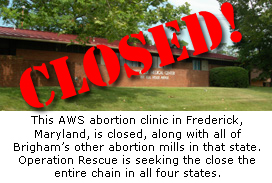
Voorhees, New Jersey – Operation Rescue has conducted an investigation of the American Women’s Services (AWS) abortion chain operated by the notorious Steven Chase Brigham and discovered that abortionists who are working to keep AWS open during Brigham’s medical license suspension have shocking backgrounds that include criminal convictions and other problems. This information has led Operation Rescue to believe that the entire AWS chain is fraught with problems and should be shut down to protect the public.
“Brighham’s abortion business is a haven for the bottom of the barrel criminals and quacks masquerading as medical doctors, and that’s just the unvarnished truth,” said Operation Rescue President Troy Newman. “We have reviewed hundreds of pages of disciplinary documents. Every medical misfit on the east coast that has run out of options seems to have found a welcome home in Brigham’s abortion organization.”
Abortionists who continue to work for Brigham include:
• An admitted sex offender and drug abuser
• Two convicted drug violators
• A convicted income tax cheat who once paid out $3.5 million in a malpractice suit.
• An abortionist convicted of billing fraud
• Several abortionists that cannot get hospital privileges
Brigham was caught operating an illegal late-term abortion ring in August, when one of his patients suffered a seriously botched abortion at a secret abortion clinic in Elkton, Maryland, that required she be airlifted to John Hopkins Medical Center in Baltimore for emergency surgery to save her life. The abortions were started illegally in New Jersey by Brigham and finished in Maryland where Brigham holds no medical license. Other abortionists involved in Brigham’s operation, Nicola Riley of Utah and George Shepard, Jr. of Delaware, had their Maryland medical licenses suspended. (Background documentation)
Four Maryland abortion mills closed
According to his web site, Brigham continues to operate 15 abortion mills in four states even though his only remaining medical license has been suspended by the State of New Jersey.
However, an investigation by Operation Rescue into Brigham’s infamous American’s Women’s Services abortion chain has revealed that five of Brigham’s listed abortion mills are now closed, including all three of his listed Maryland offices. In addition, the off-the-radar Elkton mill, where police discovered the remains of 35 late-term aborted babies in a freezer, was closed immediately by the authorities in August. Brigham’s Cheverly abortion mill closed and moved out of its office sometime in September. The Baltimore and Frederic clinics are “not taking appointments at this time” and appear to have closed, at least for now.
“Even though these clinics remain closed, phone numbers in those locations still ring in to a central office. Women are led to believe that abortion services are available locally, when they are not. Patients are then shuttled to other clinics controlled by Brigham,” said Newman. “It is a way to draw in abortion customers from areas they no longer service. Is it dishonest? Of course it is, but dishonesty and deception are traits that have characterized Brigham’s career.”
In its October 13, 2010, ruling suspending Brigham’s medical license, the New Jersey Board of Medical Examiners recognized this pattern of deception when it stated, “Dr. Brigham has consistently and repetitively engaged in manipulative and deceptive behavior designed to circumvent the requirements of the board’s termination of pregnancy regulation and to eviscerate the protections that those regulations seek to afford to New Jersey patients.”
“We have a message for the authorities in Maryland, New Jersey, Pennsylvania, and Virginia: For the love of God, please close these abortion clinics!” said Newman. “As relieved as we were by the suspensions and clinic closures, the authorities really need to do more and close AWS down permanently. We knew that the suspensions would not alleviate the danger posed to the public by Brigham’s abortion mills that remain in operation right now, but what we discovered about Brigham’s current abortion staff was worse than we had imagined.”
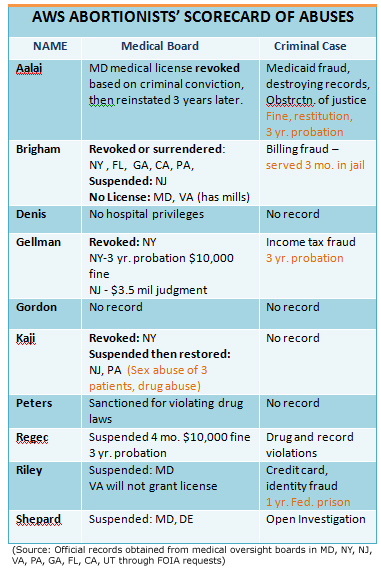
Regec’s criminal past
In Pennsylvania, two offices in Erie and State College listed on Brigham’s ASW web site have long been closed. Brigham holds no medical license in Pennsylvania since he was forced to surrender it under a cloud of accusations in 1992. However, Operation Rescue has confirmed that two abortion clinics listed on Brigham’s web site located in Allentown and Pittsburgh, are now open for business and taking patients.
Abortionist Steven Paul Regec worked for Brigham in Pennsylvania, but significantly cut back his schedule in 2007, when he applied for licensure in South Carolina and apparently relocated there. According to local pro-life groups, that led to the closure of the State College and Erie clinics. However Regec continued to operate sporadically in Allentown. Operation Rescue has confirmed that Regec actively refers to the AWS offices in Pennsylvania from his other practices. Operation Rescue’s undercover investigators were told that Regec “may or may not” be doing abortions at the Allentown clinic.
“Usually when an abortionist doesn’t work at an office, the receptionists have no problem telling callers that. It is only when they are trying to hide something that we get the ‘may or may not’ kind of answers,” said Newman. “There is obviously something to hide.”
That something may include Regec’s criminal background.
Regec, plead guilty in 1991 to three misdemeanors: one violation of the Controlled Substance Act; and two violations of Refusal or Failure to Keep or Furnish Records. As a result, Regec’s license was suspended for four months; he paid a $10,000 fine, and served two years’ probation.
Interestingly, Regec’s South Carolina medical licensing information states that Regec has no history of holding a medical license in any other state. Operation Rescue has forwarded information about Regec’s nefarious criminal deeds and medical board discipline in Pennsylvania to the authorities in South Carolina.
Gordon’s deception
In July, 2010, the Pennsylvania Department of Health told Brigham that he could no longer operate abortion clinics in Pennsylvania. Brigham then simply transferred ownership to another corporation, Rose Health Services, which is owned by an elderly woman he knew in Ohio, and the clinics continued operations without interruption.
Abortionist Richard Efram Gordon continued working at the Allentown clinic when Brigham transferred ownership. It is thought that Brigham still maintains under-the-radar connections with the Allentown and Pittsburgh mills, even though he has been banned from owning or controlling abortion clinics in Pennsylvania. For Gordon to go along with that obviously deceptive relationship shows a level of dishonesty that makes him a danger to the public.
“There is no doubt that Brigham maintains some level of involvement in the Pennsylvania clinics,” said Newman. “He has learned well over the years how to exploit the system to continue his otherwise illegal operations. All the while, women are placed in serious jeopardy from his hired abortionists whose appalling records beg the question of why they are still allowed to continue practicing.”
With the closures in Maryland and the reorganization of the Pennsylvania clinics, Brigham continues to openly and directly operate six abortion clinics in New Jersey and two in Virginia. Operation Rescue has uncovered documents that show the abortionists who work at them could well serve as inspiration for a Hollywood Halloween horror flick.
Convicted felon Gellman and his $3.5 million mistake

Abortionist Elliot Gellman currently works for Brigham at four of his New Jersey abortion clinics in Voorhees, Elizabeth, Woodbridge, and Paramus. Like Brigham, he operates dangerously without hospital privileges anywhere.
In 2002, Gellman was convicted of felony counts for repeatedly failing to file personal income taxes in New York and sentenced to three years of “conditional discharge.” As a result, his New York license was placed on probation for three years with a fine of $10,000. In 2009, Gellman was ordered by New York “never practice medicine in New York State…activate his registration…or seek to reapply for a license.”
But Gellman’s legal troubles were not confined to New York. In New Jersey, he served three years probation on his medical license for the New York income tax fraud case.
He also paid out a hefty $3.5 million settlement in August, 2006, in a malpractice case against him, according to the New Jersey Medical Board.
“Cases don’t settle for three and a half million dollars if something very serious didn’t happen. This is an indication that Gellman is a dangerous doctor with a criminal history that continues to prey on unsuspecting women,” said Newman. “His dishonesty and incompetence are incompatible with the practice of medicine where trust is everything. Gellman continues to pose a serious danger to the public.”
Convict Aalai bilks Medicaid
Abortionist Mehrdad Aalai seems to have been one of the primary abortionists in Baltimore and Cheverly, Maryland, when those clinics were in operation. It is unclear at which AWS facilities he is currently operating. He has no hospital privileges anywhere.
In October 13, 1993, Aalai was charged in Maryland with one criminal count each of Medicaid fraud, theft over $500, knowingly destroying, damaging or altering medical records, and obstruction of justice. In his defense, Aalai arrogantly argued that his fraudulent Medicaid billing did not constitute a crime of moral turpitude.
Aalai eventually pled guilty and was sentenced to three years of incarceration, which was suspended on the condition that he pay a $10,000 fine, $142,570 in restitution, and successfully serve three years of unsupervised probation. It was a slap on the wrist.
In 1994, Aalai’s Maryland medical license was revoked.
In 1996, Aalai petitioned to have his Maryland medical license reinstated. His request was granted. In 1997, his probation was terminated. However Aalai continues to be listed as a “sanctioned provider” who is barred from participating in Maryland’s Medicaid program.
No hospital will have Denis
Abortionist Frantz Denis works for Brigham at his Voorhees and Elisabeth, New Jersey locations. He maintains a medical license in New York and is listed as a certified interpreter for the Haitian Creole language. Denis also operates, like Brigham, without any hospital privileges.
Peters violates drug laws
Abortionist David Reid Peters works for Brigham at his Virginia Beach, Virginia, location.
In 2001, abortionist Peters was charged by the Virginia Board of Medicine for prescribing drugs “outside of a bona fide practitioner-patient relationship, as required by law.” He further “authorized the prescriptions without obtaining a medical or drug history, performing a comprehensive physical examination, providing information about the benefits and risks…and without initiating additional interventions and follow-up care.”
It took the Board six years to reprimand Peters for his shoddy doctoring and required that he complete continuing education courses related to the prescribing of drugs.
But Brigham’s next abortionist makes all others look like choirboys.
Sex Offender Kaji
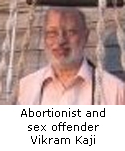
Abortionist Vikram Hiralal Kaji continues to work for Brigham at his Voorhees and Woodbridge, New Jersey, abortion mills. He has no hospital privileges.
Kaji was convicted by the New Jersey Board of Medical Examiners in 1993 for having improper sexual contact with three patients. After a lengthy relationship that involved improper sexual conduct, Kaji reportedly had sex without a condom with one young girl in the birthing center of his office during business hours. He knew his victim was vulnerable to his advances because she had been a depressed victim of child sex abuse with a history of psychiatric hospitalization. He later misperscribed drugs for her including Seconal and steroids. Kaji at first fought the charges, saying the sex was consensual, but later admitted that he had made an error in moral judgment.
Kaji was also accused of giving improper breast and rectal exams to two other women. New Jersey placed Kaji on a 1-year suspension and fined him $5,000 and ordered him to undergo psychological counseling.
The Federal Drug Enforcement Agency ordered Kaji’s license to prescribe controlled substances revoked in 1994. Also that year, Pennsylvania suspended Kaji for 36 months after learning of the New Jersey action.
The New York Medical Board was less forgiving. It revoked Kaji’s medical license for “sexual misconduct and drug abuse” in 1995, and banned him from practicing in that state.
In 2005, Marcia Carroll, the mother of one of Kaji’s underage patients, testified before the United States House of Representatives (see p. 17) regarding her daughter’s February, 2005, experience at Kaji’s New Jersey clinic. Carroll state that her daughter was “coerced, harassed and threatened” into having an abortion across state lines, in direct violation of parental consent laws, and the clinic staff never breathed a word about Kaji’s long history of sexual abuse. On the way home to Pennsylvania the 15-year-old started to cry, and she still cries herself to sleep at night. Carroll said her daughter “does suffer. She had to go to counseling for this….But she did want me to come here today and speak on her behalf. [emphasis in original] She asked me to come here for her sake and for other girls’ safety.”
In fact, it would be hard for New Jersey patients to be aware of Kaji’s history of sexual abuse since the Board’s physician look-up page excludes any derogatory information older than ten years. A search of Kaji’s New Jersey license remarkably reveals no record of discipline.
“There is no doubt in my mind that Kaji will reoffend,” said Newman. “We have seen sex offenders such as Laurence Reich, Lawson Akpulonu, Brian Finkel, and others use abortion clinics in a predatory way to access victims for abuse sometimes even after they have been caught and charged. Allowing Kaji to continue to practice is like putting a fox in the hen house. It is unconscionable and guarenteed to lead to continued abuse.”
Kaji curiously made headlines in 1989, when he offered pro-life protesters a room in his abortion clinic where they could talk to patients about their abortion decisions. However, after one visit, pro-lifers were banned from his clinic when they enraged him by showing a patient images of aborted babies and taking the woman, who changed her mind about the abortion, to a local pregnancy help center.
Why are these mills still open?
These clinics continue to operate for several reasons:
• Brigham has become adept over the years at using deception and legal loopholes to skirt the law.
• Brigham operates in four states, making is easier for his to evade laws in more restrictive states and the closing of the entire abortion chain legally difficult and complicated.
• People are generally unaware of the horrific backgrounds of the shoddy abortionists who are working at AWS, so there has been limited public outcry – until now.
• In this economic downturn, pro-life groups lack the resources needed to push this issue into the public eye and make a prosecution more probable.
Operation Rescue is committed to pursuing legal action against this dangerous chain of abortion mills in all four states in which it operates. The key to closing the chain lies in obtaining criminal charges that will put Brigham in jail for an extended period of time. Operation Rescue has reported extensively about Brigham’s accusations that he was practicing medicine without a license in Maryland and operating a secret late-term abortion mill where a botched abortion nearly cost one woman her life. We have worked with other Maryland groups to press for criminal charges against Brigham in this illegal late-term abortion scheme.
What you can do to protect women and babies from AWS abortionists
The State Attorney who would have jursdictional control over a criminal prosecution in Maryland has been non-responsive to calls for criminal charges. The good news is that he was handily defeated in November’s election. His replacement, Ellis Rollins, III, has indicated that he would will look at the case and enforce the law appropriately. Operation Rescue will be asking the public to contact the newly elected State Attorney as soon as he is sworn in to encourage him to pursue criminal charges against Brigham. With Brigham convicted and jailed, that may cause the rest of his operation to collapse. (Please sign up to receive e-mail alerts from Operation Rescue to be notified.)
Secondly, this project is huge and expensive because it requires our staff to operate in several states. Please consider making a donation to Operation Rescue today ensure we have the resources we need to continue our investigations and press for criminal charges.
Finally, please pray that Brigham will be held accountable under the law and that his chain of seedy abortion mills will permanently close.
‘Infant beheadings, severed baby feet,’ but media still ignoring Gosnell trial
PHILADELPHIA, April 11, 2013 (LifeSiteNews.com) – It’s gruesome. It’s dramatic. It’s arguably the abortion-related story of the decade.
It's the murder trial of “House of Horrors” abortionist Kermit Gosnell. And the mainstream media is almost completely ignoring it.
But cracks are beginning to show in what pro-life activists argue can only plausibly be explained as a deliberate blackout by a largely pro-abortion media of one of the biggest stories of 2013.
Recently 21 leaders in the pro-life and conservative movements signed a statement denouncing national broadcast networks ABC, CBS, and NBC for failing to give so much as a nod to the Gosnell trial.
Now they have been joined by a U.S. Congressman and a leading feminist columnist.
In a statement on the House floor today, Rep. Scott Perry, R-PA, slammed President Obama and the media for turning a blind eye to Gosnell’s alleged misdeeds.
“Mr. President, your silence is deafening,” Rep. Perry said today, according to The Hill. “Are you so blind, are you so intractable, are you so extreme that you yourself can't even call this out for what it is, something that is reprehensible? Pro-life or pro-choice, this is reprehensible.
“It is worthy of your attention,” he said. “It is worthy of your leadership. It is worthy of your direction.”
“The media doesn't want to talk about it,” Perry added. “Not NBC, CBS, ABC, CNBC, not Fox, and not the leaders of our nation, not the president.”
“It gives me great pain and sorrow to have this entered and read into the record,” Perry concluded. “But since the media outlets refuse to cover this because it's uncomfortable, because it might not meet with their agenda, and because many of the leaders of this country refuse to discuss it, I think it's important that we have it read into the record, so that this history and their stories don't remain untold.”
Fox News analyst and Daily Beast columnist Kirsten Powers, who is a liberal and feminist, also added her voice today to those who have called out the media for downplaying the Gosnell trial despite its evident newsworthiness.
“Infant beheadings. Severed baby feet in jars. A child screaming after it was delivered alive during an abortion procedure. Haven't heard about these sickening accusations?,” asked Powers in the opening to her column, published on USAToday.
“It's not your fault,” she added. “Since the murder trial of Pennsylvania abortion doctor Kermit Gosnell began March 18, there has been precious little coverage of the case that should be on every news show and front page.”
“Let me state the obvious. This should be front page news. When Rush Limbaugh attacked Sandra Fluke, there was non-stop media hysteria. … Yet, accusations of babies having their heads severed — a major human rights story if there ever was one — doesn't make the cut.”
Powers concluded: “You don't have to oppose abortion rights to find late-term abortion abhorrent or to find the Gosnell trial eminently newsworthy. This is not about being ‘pro-choice’ or ‘pro-life.’ It's about basic human rights.
“The deafening silence of too much of the media, once a force for justice in America, is a disgrace.”
Gosnell stands accused of murdering seven newborn babies by “snipping” their spinal cords. He is also charged with murdering one of his clients, who died after an overdose of anesthesia.
Testimony in the case has been ongoing for the past two weeks, and has featured several of Gosnell’s former employees giving gruesome details about the conditions at what has been dubbed Gosnell’s “House of Horrors” clinic, including the routine practice of severing the spinal cords of hundreds of newborn babies.
One former employee described Gosnell's method of “abortion” as “literally a beheading.” He also testified: “It would rain fetuses. Fetuses and blood all over the place.”
But despite the dramatic testimony, coverage has been isolated mostly to a small number of mostly local or smaller conservative outlets.
Rights of conscience must be preserved
Source: Detroit News
Michigan lawmakers worried that the Obama administration is brushing over concerns that its health care law will trample religious freedoms have crafted an appropriate bill to shield workers and hospitals from being coerced into violating their conscience.
Sen. John Moolenaar, R-Midland, introduced legislation that would offer conscience protections to individuals and institutions in the health care field.
“The HHS mandate brought this to the forefront,” Moolenaar says, referring to regulations from the federal Health and Human Services department requiring all insurance plans to provide coverage of abortions and contraceptives. “As a state, we need to protect the religious liberty and conscience of citizens.”
The bill recently passed out of the Senate Health Policy Committee and will now be taken up by the full Senate.
And while a state law can’t override federal contraceptive dictates, it would prevent similar mandates from occurring at the state level and would protect hospitals and workers from having to engage in activities they object to on moral or religious grounds.
Other states, including Illinois, Missouri and Kentucky, have similar laws, according to the Michigan Catholic Conference, which is backing Moolenaar’s bill.
Michigan already has a 30-year-old law on the books allowing health care workers and health care facilities to refuse participating in abortions.
This bill would expand protections to other non-life-threatening, elective services, including selling contraceptives and participating in sterilization procedures.
The legislation would also shield health care providers and institutions from firing, liability or discrimination because of objections to certain services.
But the bill, along with existing federal law, excludes religious objections in life-threatening situations. The bill would also limit objections in parts of Michigan where health care services are limited.
At a time when the White House has decided enacting its health care bill is more important than respecting civil liberties, the state must offer its citizens what protections it can.
Same-Sex Marriage: We’re Playing Chess, Not Checkers
by Doug Mainwaring
Just as chess requires players to seriously consider every possible consequence of their moves, we need to seriously consider every possible consequence of the push for same-sex marriage, especially for children.
In our sometimes misguided efforts to expand our freedom, selfish adults have systematically dismantled that which is most precious to children as they grow and develop. That’s why I am now speaking out against same-sex marriage.
By the way, I am gay. (more…)
I’m gay, and I oppose gay marriage
by Doug Mainwaring, Source:ThePublicDiscourse.com
In our sometimes misguided efforts to expand our freedom, selfish adults have systematically dismantled that which is most precious to children as they grow and develop. That’s why I am now speaking out against same-sex marriage.
By the way, I am gay.
A few days ago I testified against pending same-sex marriage legislation in Minnesota’s Senate Judiciary and House Civil Law Committees.
The atmosphere at these events (I’ve also testified elsewhere) seems tinged with unreality—almost a carnival-like surrealism. Natural law, tradition, religion, intellectual curiosity, and free inquiry no longer play a role in deliberations. Same-sex marriage legislation is defended solely on grounds of moral relativism and emotions.
Pure sophistry is pitted against reason. Reason is losing.
Here’s the problem: The national discussion of same-sex marriage treats the issue like a game of checkers, where opponents can quickly gain each other’s pieces without much forethought about the consequences. This unreflective view of the discussion has prevented any real debate.
In years past, defenders of marriage found it easy to win the battle on the checker board. Appeals to religion and tradition won hands down almost effortlessly. While same-sex marriage advocates argued for a more thoughtful consideration of the topic, they were mostly just bulldozed over.
The tide has turned. Same-sex marriage proponents now have all the “kings” on the board, and rule it. One only needs to consider media headlines from the last few weeks. We are bombarded with approvals of same-sex marriage. To the casual onlooker, not steeped in this issue, it would seem that conservatism has embraced same-sex marriage. Each day brings fresh news of Republican political elites, Fortune 500 companies, NFL members, and even Dirty Harry himself, Clint Eastwood, throwing their support behind genderless marriage.
The game we are actually playing is chess, not checkers. This sounds confusing, because chess and checkers are played on the exact same sixty-four square game board. Checkers is easy and it’s fast. It’s one of the first games children learn how to play. Chess is hard, requiring thought about the intended and unintentional consequences of every single move that may or may not be made.
In developing their goals for policy and law, politicians often look no further than the next election cycle. They’re concerned about votes. Supporting same-sex marriage now looks like a winner for them.
It also looks like a winner for media outlets, concerned about revenues and readership, and for large corporations, eager to polish their images and create goodwill. Few of these outlets are interested in playing chess because a quick win at checkers is more important to them.
The sense of urgency regarding same-sex marriage, now palpably frenetic, is in itself a sign of our national discussion’s devolution into nothing more than slogans and emotions.
Our nation’s individual state legislatures and courts—including the Supreme Court— need to apply the brakes. Now.
As in chess, the unintended consequences deserve sound consideration.
Genderless marriage now enjoys an aura of equality and fairness, which suggests that the framers of the Fourteenth Amendment had same-sex marriages in mind as they penned their magnificent giant leap forward for humanity. While this situation is highly unlikely, those who selfishly seek additional “rights” for themselves have found their justification in the penumbra they now sense surrounding legitimate civil rights.
Same-sex marriage will not expand rights and freedoms in our nation. It will not redefine marriage. It will undefine it.
This isn’t the first time our society has undefined marriage. No-fault divorce, instituted all across our country, sounded like a good idea at the time. Its unintended consequence was that it changed forever the definition of marriage from a permanent relationship between spouses to a temporary one. Sadly, children became collateral damage in the selfish pursuits of adults.
Same-sex marriage will do the same, depriving children of their right to either a mom or a dad. This is not a small deal. Children are being reduced to chattel-like sources of fulfillment. On one side, their family tree consists not of ancestors, but of a small army of anonymous surrogates, donors, and attorneys who pinch-hit for the absent gender in genderless marriages. Gays and lesbians demand that they have a “right” to have children to complete their sense of personal fulfillment, and in so doing, are trumping the right that children have to both a mother and a father—a right that same-sex marriage tramples over.
Same-sex marriage will undefine marriage and unravel it, and in so doing, it will undefine children. It will ultimately lead to undefining humanity. This is neither “progressive” nor “conservative” legislation. It is “regressive” legislation.
Nowhere on any marriage license application in any state are the applicants asked, “Do you love each other?” Yet this is the basis on which same-sex marriage proponents seek to change our laws. Is the state really in the business of celebrating our romantic lives?
The mantra I heard repeatedly in Minnesota was that “marriage is about love, commitment, and responsibility.” But these three things are not the state’s interests in marriage. Marriage, from the state’s perspective, is about kids. Period. That’s the reason the institution exists. We should tremble at and fear the notion of undoing it.
For a nation that has no trouble selfishly creating a seventeen-trillion-dollar (and growing) deficit it will soon hand off to its children and grandchildren, perhaps this is asking too much. But for the sake of all children and those yet to be born, we need to slow down and seriously consider the unintended consequences of undefining marriage. Otherwise, we risk treating our progeny as expendable pawns, sacrificed in the name of self-fulfillment. We can do better than that.
Doug Mainwaring is co-founder of the National Capital Tea Party Patriots. This article reprinted with permission from The Public Discourse.
‘Nobody mentioned the risk’: woman paralyzed after taking contraceptive pill speaks out
by Peter Baklinski,
QUEBEC, April 3, 2013 (LifeSiteNews.com) – The pill may have promised women the world, but many women are discovering that blood clots, stroke, paralysis, and even death are a price too high to pay for the holy grail called sexual liberation.
This is true for 32-year-old Marie-Claude Lemieux of Quebec.
Three years ago Marie-Claude began taking the contraceptive pill Tri-Cyclen, manufactured by Toronto-based drug company Janssen.
Tri-Cyclen, like all oral contraceptives, contains synthetic versions (norgestimate and ethinyl estradiol) of two female sex hormones – estrogen and progestin.
According to the manufacturer, Tri-Cyclen inhibits the woman’s ovaries from releasing eggs. It also thickens her cervical mucus to immobilize sperm so they cannot reach an egg to fertilize it. If fertilization occurs despite these measures, the pill hardens the woman’s uterine wall to prevent implantation of a newly conceived human life.
Marie-Claude had taken Tri-Cyclen for six months when she one day unexpectedly suffered a stroke that left her completely paralyzed, save for the ability to move her left eyelid. Doctors blamed the stroke on the contraceptive pill since Marie-Claude was not overweight, did not smoke, and had no family history of stroke.
Last week, Marie-Claude was able to communicate to a reporter from La Presse that before going on Tri-Cyclen, neither her doctor or pharmacist told her the risk factors involved in taking the contraceptive pill.
“Nobody mentioned the risk and I believed that since it was approved [for women’s use], it was not dangerous.”
“Let's say it has a nasty side effect,” she said.
While Marie-Claude has gained some use of her finger, which allows her to communicate on an electronic device using a special program, doctors believe that she will remain severely disabled for life.
Many women are shocked to learn the manufacturer’s small print of the risks involved in taking the pill.
Janssen states on its website that Tri-Cyclen’s risks include:
1. Circulatory disorders including “blood clots in legs, lungs, heart, eyes or brain.” Janssen states clearly that blood clots are the “most common serious side effects of birth control pills. Clots can occur in many areas of the body.”
2. Breast cancer. Janssen warns that “women who use birth control pills may be at increased risk of developing breast cancer before menopause,” adding that these women “may be long-term users of birth control pills (more than eight years) or women who start using birth control pills at an early age.”
3. Cervical cancer. Janssen warns that “some studies have found an increase of cancer of the cervix in women who use hormonal contraceptives”.
4. Gallbladder disease. Janssen warns that “users of birth control pills have a greater risk of developing gallbladder disease”.
5. Liver tumours. Janssen warns that the “short and long-term use of birth control pills also has been linked with the growth of liver tumours.”
But Marie-Claude is only one of numerous women who have experienced negative side-effects from using the pill – ranging from the minor to the fatal.
A discussion board on Topix has over 200 entries from women sharing their horror stories of using Tri-Cyclen related pills. Some mothers have had their teenage daughters die from using the pill. Some women have had close brushes with death. Others have become incapacitated for life. Many are hoping for a class action lawsuit against the manufacturer.
One mother from California wrote of her teenage daughter: “My precious Baby girl died June 25, 2009 from using Ortho TriCyclene Lo. I agree whole heartedly with you [that] the company should be held responsible for the children that are dead because of this drug. Believe me we will have our say soon, and although no amount of money will bring our precious little girls back, their deaths will not have been in vain.”
A mother from Montana wrote: “My daughter almost died 2-1/2 years ago after taking these pills for about 6 weeks. After a week in the ICU, a clot buster procedure, and 4 titanium stents in her iliac, she took coumadin for 8 months.”
Another mother wrote: My 21 year old girl died 28 days after taking this deadly drug! She was going to get married in Nov, and died in Oct, 2008) 28-days after starting the birth control pill. I don't care how many warnings are on the information packet, this company should be forced to re-design this drug or take it off of the market.”
A woman named Jaime wrote: “I was on Ortho Tri-Cyclen in 2001 when I ended up with a transverse sinus thrombosis, which is a clot in my brain. My neurologist left me on the birth control pills and 6 months later I got a PE, pulmonary embolism, which is a clot in your lungs. I am lucky to be alive with both of these. The doctor from the PE immediately pulled me off of the birth control. I have been and will continue to be on blood thinners my whole life.”
According to La Presse, approximately 90,000 Quebec women were on the pill last year. No one knows how many women have suffered from using it since doctors are not required to report adverse effects.
Women who have suffered using Tri-Cyclen are discovering that there is no recourse to legal action against the manufacturer since the manufacturer clearly states the risks associated with using the product.
Marie-Claude’s husband Frederic Boulianne told La Presse that he would be willing to join a class action suit against the makers of Tri-Cyclen. He compared using the pill to playing “Russian Roulette.”
Andrea Mrozek, founder of ProWomanProLife.org, told LifeSiteNews.com that her heart goes out to women suffering from the pill.
“I remember reading The Greatest Experiment ever Performed on Women by Barbara Seaman and wondering why this information isn't more commonplace. Women take the pill because it is easy to take and does the job. And yet, side effects do occur and an outcome like this isn't easy (or freeing) in the end, at all.”
Mrozek pointed out that there are safe methods of postponing pregnancy that are just as effective as the pill but are 100 percent natural. These include the Billings ovulation method, the Creighton Model FertilityCare System, and the symptothermal method.
“I’m convinced if more women knew and understood what these other methods are, they would use them instead,” she said.
The Morning After Pill and other types of “Emergency Contraception”–Myths and Realities
 By Liliana Cote de Bejarano MD, MPH, CFCP
By Liliana Cote de Bejarano MD, MPH, CFCP
What is “emergency contraception”?
Emergency contraception (EC) is the use of pills or devices after sex to try to prevent pregnancy.1 EC is promoted when a woman has been raped, when a couple has chosen to have sex without using any form of contraception, or when there is a suspected contraceptive failure. Types of EC may include pills or the insertion of the Copper-T Intrauterine Device (IUD) up to five days after intercourse. The use of other drugs as emergency contraception is under investigation.2
What is the “Morning After Pill”?
The phrase “Morning After Pill” (MAP) describes a set of contraceptive pills taken after a sexual act, to prevent pregnancy. One type of MAP contains only the synthetic progestin levonorgestrel (LNG), which is the main drug in other commercial contraceptives. Commercial names for the MAP include Plan B One Step, Take Action, Next Choice One Dose, My Way, and others.3 The Food and Drug Administration has approved Plan B One Step for sale without age restrictions. A second type of MAP is the anti-progesterone “Ella”, available with prescription in the United States. A third type of MAP is the “off label” use of combined oral contraceptive pills. A fourth type of EC is the abortion pill Mifepristone (RU 486), used outside the USA.
How does the Morning After Pill work?
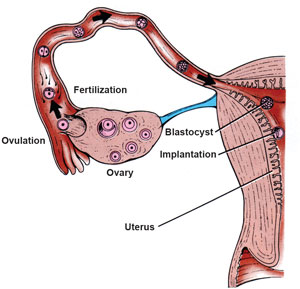
The new baby (blastocyst) migrates from the fallopian tube to the uterus where it implants 5-7 days after conception.
Conception of a new human being is possible only during a few days in the woman’s cycle. Sperm can survive in the woman’s body 3-5 days, and the ovum dies 12-24 hours after ovulation. Fertilization normally occurs in the fallopian tube after ovulation. The new human being (blastocyst) moves from the fallopian tube to the uterus where it implants 5-7 days after conception. A delicate hormonal balance is necessary for the baby’s survival.
Some studies seem to show that Plan B works by changing the cervical mucus or by attacking sperm. More recent studies, however, show that these effects may happen when the drug is taken regularly (like birth control pills), but NOT after one dose (like EC).4,5
Advocates of EC claim that the active ingredient in Plan B works mainly by stopping or delaying ovulation Available studies show that when Plan B was given to women in the fertile part of their cycle, 80% OR MORE of them ovulated, although NONE of them became obviously pregnant (see diagram below).6,7 If sperm and an egg are present in the woman’s body but no obvious pregnancy develops, then abortion is the most likely cause.8 Some studies also show that Plan B disturbs the hormonal balance needed to maintain pregnancy.9,10
What about other types of emergency contraception?
Copper-T IUDs—Copper ions released from an IUD are toxic for sperm and the ovum, decreasing the probability of fertilization.11 Also, the Copper-T IUD lowers the chances of survival of any embryo that may be formed before it reaches the womb. The Copper-T IUD stops the lining of the womb from accepting a newly formed embryo.12 Thus the Copper-T IUD may have a post-fertilization effect, meaning it destroys a young human embryo.
Ella and Mifepristone (RU-486) change the body’s ability to react to some hormones. They can block the action of the hormone progesterone,13 thereby destroying a new human life through chemical abortion. Ella can also delay or block ovulation if taken before ovulation.14
If conception (fertilization) has already taken place, then the only way the IUD and the morning after pill (MAP) can be effective is by destroying the new life. When a woman takes theses pills or when the IUD is inserted, there is currently no way for her or her doctor to know whether or not she has already conceived. A pregnancy test cannot give this information before implantation. Whenever these pills are taken, or a Copper-T IUD is inserted after sexual activity, there is the risk that a new human life will be destroyed.
Does this mean that emergency contraception is an abortifacient— that it can cause an abortion?
A new human life begins at conception, also called fertilization. However, in September 1965, the American College of Obstetricians and Gynecologists (ACOG) attempted to redefine “pregnancy” as beginning at the time of implantation, and not at the time of conception. The effectiveness of pills and devices that do not prevent fertilization depends on destruction of a new human life. This should be called an “abortion” in spite of the medical definition from the ACOG.
In a recent study 8 out of 10 women who took the MAP ovulated. This means that if they had sex, some of these 8 women likely became pregnant. None had an obvious pregnancy, so the women who became pregnant probably experienced an early abortion.
How effective is emergency contraception?
The Copper-T IUD prevents 99% of expected pregnancies. Ella and Plan B prevent some of expected pregnancies after unprotected intercourse.15 The effect of EC in reducing unintended pregnancies and induced abortions has not yet been proven. Available studies show that EC may have no effect on unintended pregnancies, it may even increase them.16, 17, 18,19 Women with high body mass may also find that EC has decreased or no effectiveness in preventing pregnancy.20 In addition, providing emergency contraception in advance has the negative effect of increasing risky sexual behavior.21 Overall, the evidence suggests that the Morning After Pill is not effective for preventing unintended pregnancies.
How safe is emergency contraception?
A Morning After Pill that contains LNG can cause heavier or lighter menstrual bleeding, nausea, vomiting, abdominal pain, fatigue, headache, dizziness, breast tenderness, delay of menses (up to 7 days), and diarrhea. The use of LNG also increases the risk of ectopic pregnancy.22 The use of Ella has been connected with headache, abdominal or upper abdominal pain, nausea, dysmenorrhea, fatigue, and dizziness.23 Women who use the Copper-T IUD can experience uterine cramps and other undesirable effects such as ectopic pregnancy, septic abortion, pelvic infection, perforation, embedment, anemia, backache, painful periods, pain during intercourse, vaginal discharges, prolonged menstrual flow, menstrual spotting, cramping, and vaginitis.24
One study reported that women may repeatedly use EC due to an exaggerated perception of its effectiveness.25 Another study found that over-the-counter access to EC leads to increased Sexually Transmitted Infections by approximately 12% for women ages 15-44 due to increased risky sexual behavior.26 More time and research are needed to know the long-term effects of emergency contraception on the health and safety of women.
Are there other options?
If you are single, the surest way to avoid pregnancy or a sexually transmitted infection is abstinence, and it always works. If you are married, the modern methods of Natural Family Planning (NFP) are the safest, healthiest, least toxic, and least expensive means for family planning. Victims of rape or sexual abuse need and deserve the best medical care and human support possible. The additional stress and health risks of emergency contraception add further harm. (Pregnancy due to rape is estimated at 5%).27 For the vast majority of these women, emergency contraceptives impose significant health risks with no benefit. If conception has already occurred, then a very early abortion is the only means for emergency contraception to be effective. Abortion carries with it many serious adverse consequences such as increased rates of breast cancer, depression, anxiety, suicidal behaviors, and substance use disorders.28 A far safer approach is to carry the child to term. Adoption is always an option.
Confidential pregnancy assistance services are available throughout the U.S. and Canada by calling Option Line at 800-395-HELP (4357) and Abortion Pill Reversal Network at 877-558-0333.
REFERENCES:
1. Trussell J, PhD and Raymond, EG, MD, MPH. Emergency contraception: a last chance to prevent unintended pregnancy. Retrieved from: http://ec.princeton.edu/questions/ec-review.pdf, July 28 2015.
2. Jesam C, Salvatierra AM, Schwartz JL, & Croxatto HB. (2010). Suppression of follicular rupture with meloxicam, a cyclooxygenase-2 inhibitor: Potential for emergency contraception. Human Reproduction (Oxford, England), 25(2), 368-373.
3. Emergency Contraception Pills. Retrieved from http://ec.princeton.edu/info/ecp.html, July 28 2015.
4. Nascimento JA, Seppala M, Perdigao A., Espejo-Arce X, Munuce MJ, Hautala L, et al. (2007). In vivo assessment of the human sperm acrosome reaction and the expression of glycodelin-A in human endometrium after levonorgestrel-emergency contraceptive pill administration. Human Reproduction (Oxford, England), 22(8), 2190-2195.
5. Hermanny A, Bahamondes MV, Fazano F, Marchi NM, Ortiz ME, Genghini MH, et al. (2012). In vitro assessment of some sperm function following exposure to levonorgestrel in human fallopian tubes. Reproductive Biology and Endocrinology : RB&E, 10, 8-7827-10-8.
6. Brache V, Cochon L, Deniaud M, Croxatto, HB. Ulipristal acetate prevents ovulation more effectively than levonorgestrel: analysis of pooled data from three randomized trials of emergency contraception regimens. Contraception. Nov 2013; 88(5): 611-618.
7. Noe G, Croxatto HB, Salvatierra AM, Reyes V, Villarroel C, Munoz C, et al. Contraceptive efficacy of emergency contraception with levonorgestrel given before or after ovulation. Contraception. Nov 2011; 84(5): 486-492.
8. Kahlenborn C, Peck R, & Severs WB. (2015). Mechanism of action of levonorgestrel emergency contraception. The Linacre Quarterly, 82(1), 18-33.
9. Croxatto HB, Brache V, Pavez M, Cochon L, Forcelledo ML, Alvarez F, et al. Pituitary-ovarian function following the standard levonorgestrel emergency contraceptive dose or a single 0.75-mg dose given on the days preceding ovulation. Contraception. Dec 2004; 70(6): 442-450.
10. Hapangama D, Glasier AF, Baird DT. The effects of peri-ovulatory administration of levonorgestrel on the menstrual cycle. Contraception. Mar 2001; 63(3): 123-129.
11. Ortiz ME, Croxatto HB. Copper-T intrauterine device and levonorgestrel intrauterine system: biological bases of their mechanism of action. Contraception. Jun 2007; 75(6 Suppl): S16-30.
12. Gemzell-Danielsson K, Berger C & Lalitkumar PGL. (2013). Emergency contraception–mechanisms of action. Contraception, 87(3), 300-308.
13. Keenan JA. Ulipristal acetate: contraceptive or contragestive? Ann Pharmacother. Jun 2011; 45(6): 813-815.
14. Brache V, Cochon L, Jesam C, Maldonado R, Salvatierra AM, Levy DP, et al. Immediate pre-ovulatory administration of 30 mg ulipristal acetate significantly delays follicular rupture. Hum Reprod. Sep 2010; 25(9): 2256-2263.
15. Fred F. Ferri M.D., F.A.C.P. (2016). Ferri’s clinical advisor 2016 Elsevier, Inc
16. Rodriguez MI, Curtis KM, Gaffield ML, Jackson E, Kapp N. Advance supply of emergency contraception: a systematic review. Contraception. May 2013; 87(5): 590-601.
17. Raymond EG, Trussell J, Polis CB. Population effect of increased access to emergency contraceptive pills: a systematic review. Obstet Gynecol. January 2007; 109(1): 181-188.
18. Walsh TL, Frezieres RG. Patterns of emergency contraception use by age and ethnicity from a randomized trial comparing advance provision and information only. Contraception. Aug 2006; 74(2): 110-117.
19. Glasier A, Fairhurst K, Wyke S, Ziebland S, Seaman P, Walker J, et al. Advanced provision of emergency contraception does not reduce abortion rates. Contraception. May 2004; 69(5): 361-366.
20. Glasier A, Cameron ST, Blithe D, Scherrer B, Mathe H, Levy D, et al. (2011). Can we identify women at risk of pregnancy despite using emergency contraception? data from randomized trials of ulipristal acetate and levonorgestrel. Contraception, 84(4), 363-367.
21. Belzer M, Sanchez K, Olson J, Jacobs AM, Tucker D. Advance supply of emergency contraception: a randomized trial in adolescent mothers. J Pediatr Adolesc Gynecol. Oct 2005; 18(5): 347-354.
22. Zhang J, Li C, Zhao WH. Xi X, Cao SJ, Ping H, et al. (2015). Association between levonorgestrel emergency contraception and the risk of ectopic pregnancy: A multicenter case-control study. Scientific Reports, 5, 8487.
23. Ulipristal Acetate. http://www.pdr.net/drug-summary/ella?druglabelid=1278 August 10 2015
24. Intrauterine Copper Contraceptive Paragard. Retrieved from http://www.pdr.net/drug-summary/paragard?druglabelid=572 August 10 2015
25. Melton L, Stanford JB, Dewitt MJ. Use of levonorgestrel emergency contraception in Utah: is it more than “plan B”? Perspect Sex Reprod Health. Mar 2012; 44(1): 22-29.
26. Mulligan K. (2015). Access to emergency contraception and its impact on fertility and sexual behavior. Health Economics (Published Online).
27. Holmes MM, Resnick HS, Kilpatrick DG, Best CL. Rape-related pregnancy: estimates and descriptive characteristics from a national sample of women. Am J Obstet Gynecol. August 1996; 175(2): 320-324.
28. Fergusson DM, Horwood LJ, Ridder EM. Abortion in young women and subsequent mental health. J Child Psychol Psych. January 2006; 47(1): 16-24.
What To Expect When No One’s Expecting America’s Coming Demographic Disaster
With candor, excellent research, and a sense of humor, Jonathan Last dispels the overpopulation myth with the stark truth: nations across the globe are facing a population collapse. Wolves invading sparsely populated boarder villages and childless villages being sold as garbage dumps might sound like a fiction novel, but this is a reality facing Germany and Japan, just two of the many nations dealing with drastically low fertility rates. Sub-replacement fertility rates cannot be summed up by one or two causes. Last covers the many elements contributing to declining fertility rates, from government policies, economics, and secularism, to education, marriage trends, and much more. Learn what could happen (or is happening) to countries whose birthrates have collapsed and what can be done to prevent a population collapse.
Four Keys to Happy Healthy Marriage
By Bonnie Borel-Donahue
 Who could be a better role model for how to love one’s spouse than the Ultimate Lover, God? But, just how does God love?
Who could be a better role model for how to love one’s spouse than the Ultimate Lover, God? But, just how does God love?
Having meditated on this question, Pope Paul VI and Pope John Paul II discerned four key characteristics of God’s love. God’s love is always: free, total, faithful and fruitful. Each key is also one of the four essential qualities of authentic married love. This brochure will introduce you to these four very important keys for starting out on, or getting back onto, the road to a great marriage. Through the graces that come from the sacrament of Holy Matrimony, together with prayer and regular reception of the sacraments of Reconciliation and the Eucharist, spouses are given all the strength and power to love each other as Jesus loves His Church: freely, totally, faithfully and fruitfully. These are the four keys to authentic conjugal love. Through the Sacraments and learning more about the four keys to marital love presented in this brochure, couples can open the door to an ever more satisfying and fulfilling marriage.1 (more…)
Religious Freedom Initiative and Yard Signs
Please prayerfully considering getting involved in this effort, get a PROTECT RELIGIOUS FREEDOM yard sign for your yard, and forward to all your friends.
We are a group of concerned citizens organizing an effort across midwestern-southwestern Ohio to pray, educate, and witness for the protection of religious liberty. Below are details on our plans and how you can get involved. (more…)
Misogyny of Women’s Health Care: Johnnette Benkovic Interviews Dr. Chris Kahlenborn
Misogyny of Women’s Health Care
 The Women of Grace show on EWTN features a series by Dr. Chris Kahlenborn, MD called The Misogyny of Women’s Health Care – the titles of the programs are listed below. (more…)
The Women of Grace show on EWTN features a series by Dr. Chris Kahlenborn, MD called The Misogyny of Women’s Health Care – the titles of the programs are listed below. (more…)
First Comes Love
Here is everything you wanted to tell your married child, and everything you wish your parents had told you about marriage. First Comes Love is a collection of the very best the Church has to offer to help couples have long and very happy marriages. Drawing from Popes John Paul II and Benedict XVI, Christopher West, Emily Sederstrand, Steve Wood, St John Chrysostom, and many others, this publication offers articles, quotes, personal testimonies, graphs, prayers, and recommendations. Subjects include finding the right mate, the blessings of children, the value of Natural Family Planning, how chastity works inside of marriage, and infertility; everything a young couple needs to get their marriage onto a solid foundation.
Mandate Busting Resources

Welcome to One More Soul’s “Mandate Busting Resources” store. We believe that these resources will help you challenge the government’s mandated coverage of contraception, abortifacients, and sterilization by all “health” insurance plans. (more…)
The Life of Jesus in The Womb: A Meditation and a Prayer
By Kathleen Curran Sweeney
Introduction
We are immersed in a culture of images and the external
appearance of things. Too seldom are we asked to contemplate
the inner reality, the inner being of what we see.
In the following meditation, we are asked to reflect on
how Jesus Christ, for whom and in whom all the world is created,
took on both the external appearance and the inner reality of a
developing human person, from the moment he is conceived by
the Holy Spirit to the day of his birth. We are not accustomed
to seeing him thus, because this development is hidden within
the protective womb of Mary. But today’s technology allows us
to pull aside the veil surrounding this early development of the
child. Photography and ultrasound imagery allows us to see the
physical appearance of the child and the science of embryology
and fetology provides us with the intricate and amazing details of
the child’s development.
“The Lord called me from the womb, from the body of my
mother he named my name.” (Isaiah 49:1)
The humility of the Son of God in submitting his
personhood to this development bestows an infinite dignity on
this bodily phenomenon. Every preborn child shares in this
dignity and is called to union with Christ, even to receiving into his
body the Eucharistic Body and Blood of Christ.
Christ’s external appearance is not always attractive to
the eye. There was the time in his life that, “He had no form or
comeliness that we should look at him, and no beauty that we
should desire him.” (Isaiah 53: 2). Yet the inner reality of the
divine-human Person is such a brilliant beauty that our eyes are
not strong enough to behold it. In his condescension, he has
hidden himself in the simplicity of the Eucharistic Host.
Make Straight the Pathway- San Francisco
https://onemoresoul.com/SanFrancisco
101 WAYS to build up REAL LOVE & show AFFECTION
By Jen Messing
Let’s be honest.
Media isn’t the best place to get ideas about how to show physical affection or how relationships should start and progress.
If you want real love, you have to build a real friendship. That means not just looking for physical pleasure or emotional comfort.
If you are interested in defending
your relationship against using each other,
“how far is too far?”
may not be the question to ask.
These ideas can be a solid place to start
or deepen a relationship. Get beyond what the culture tells you is normal—take time to actually get to know yourself and each other
for who you are
and see if you enjoy each other’s company!
“OK, SO WHAT CAN WE DO??”
First things first: Examine what is stirring in you. Are you craving contact with another person? Know that the desire to be in relationships is not bad (since we’re made in God’s image, we’re made to love!) but we should not use others to fill us up. The reality is, only God can do that.
If you are asking “how far is too far?” you may have good intentions—but a better question is “how can I really love this person?”
God is the Standard for Love (see back panel) and we are made to love like Him—not to settle for less or to use each other. Know that “rules” are meant to uphold real love and the dignity of every person involved.
If you see people as a means to your own end, you will treat them that way. Purity in action flows from purity of heart and thought. Aim to act as God made us to be from the very beginning: good to the core.
The draw toward physical and emotional expressions of love will very quickly get stronger when you really connect with someone. It’s good to acknowledge that fact and not just push the feelings down—but it’s also not OK to simply indulge. There is a balance to be found.
Rather than being stuck in the two extremes, you can re-focus: pray, think and be creative!
- Thank God for the other person and for the good gift of your desire to love!
- Ask God to show you how to take all that energy and direct it toward loving like HE loves.
- Examine what you have learned about relationships from family, culture, media, etc… you may have some untwist any lies.
- Contemplate who, why & how you are choosing to love! Let God guide your heart and don’t brush off internal warnings; pray about them and talk them out!
Commit to speaking the Truth with your body! A sincere embrace or kiss speaks a language: it should bless the other with a message of love and commitment. Real love doesn’t push boundaries that warm you up for sexual intercourse. In Marriage, the body-soul union of spouses is a renewal of their vows.
Definitions to think about:
- Friendship are good and needed. Don’t confuse the healthy close, mutual admiration or friendship with sexual attraction. Don’t let it get flirty, just be you.
- ‘Dating’ has classically meant a guy asking a variety of ladies out over time because in order to get to know them, while keeping the idea of marriage in mind. This same intent can be accomplished by hanging out in small groups at school, work, church, etc. One-on-one time (going out on dates) should be fun and low–key, but don’t get into the ‘friends with benefits’ or ‘hook up’ mentality!
- ‘Courtship’ is a foreign word to most. Our culture calls exclusive relationships ‘dating’ but usually gives little thought to marriage. A good mindset is to not be wooed into this more serious relationship unless you have already been friends for a while and he or she is the type of person you think you could marry.
Courtship is where conversation and knowledge about the other & yourself goes deeper and deeper. Spending a lot of time around family and friends will help you gain perspective about the other person as you start to pray and talk about marriage. - Engagement declares the intent to marry but it’s not just about planning the reception. Go on a marriage preparation retreat before you set the wedding date! Get specific in conversations about daily life expectations, finances and family. Take a NFP (Natural Family Planning) class so you truly know what’s going on. This time of waiting for sexual union will reveal the variety of ways you can deepen your love for each other.
- Public vows of Marriage are meant to protect the intimate body-soul bond of love between one man and one woman so that they and their children have a permanent place to grow in love together! If one of these intentions is missing (to bond permanently or openness to procreating children), the true meaning of marriage is not being upheld. Prior to the vows when a couple declares ‘for better or worse until death do us part’, each says ‘I do’ to the following:
- Do you come here freely and without reservation?
- Are you prepared to love and honor each other for as long as you both shall live?
- Will you accept children lovingly from God?
LOVE is:
- A choice to make a gift of yourself to another person.
- To want & work toward the best for someone else, even when it is difficult. It goes beyond emotion.
- A participation in God’s love…the real thing is:
- FREE: not forced or enslaved to urges.
- TOTAL/FULL: not conditional. In marriage, it is not partial or holding back any part of a person.
- FAITHFUL: steadfast; never abandons. In marriage, vows are permanent, only broken by death.
- FRUITFUL: physically &/or spiritually life-giving.
- Shown in different ways to different people! Various ways go giving and receiving love are appropriate between spouses, family members, friends, strangers in need, etc. Though many of us are in this habit, it is not an accurate word to use toward food, animals or objects.
LUST is:
- Not seeing the other as a person but as an object.
- Sexual desire that distorts God’s love. Sexual desire itself is not the sin; it is a gift from God that points to a good desire for love, but it can easily be twisted!
- Using (in thought or in action) someone (body or soul) for your own benefit. (FYI, Marriage isn’t an outlet for lust!)
- Can be a convincing counterfeit of real love.
BRAINSTORM…
What is Natural Family Planning?
Natural Family Planning (NFP) is an umbrella term for certain methods used to achieve and postpone pregnancies. NFP can also be used as a tool to evaluate women’s gynecological/reproductive health. These methods are based on the observation of naturally occurring signs of the fertile phase of a woman’s fertility cycle. Couples using NFP to achieve pregnancy engage in intercourse during the woman’s fertile phase. Couples wishing to postpone pregnancy simply abstain from genital contact during the time of fertility. No drugs, devices or surgical procedures are used in the practice of NFP.
NFP reflects the dignity of the human person within the context of marriage and family life, promotes openness to life, and recognizes the value of every child. By respecting the love-giving and life-giving nature of marriage, NFP enriches the bond between husband and wife.
Is NFP the Rhythm Method?
NFP is not the “Rhythm Method.”
The Rhythm or Calendar Method was in use more than 80 years ago. It was based on the assumption that ovulation occurred about the same time in every cycle. This method often proved unreliable because of the unique nature of each woman’s fertility cycles. Some women have very irregular cycles and almost all women have a cycle of unusual length once in a while.
Modern NFP treats each cycle as unique and is based on over 60 years of scientific research on human fertility. These methods are based on the day-to-day observations of naturally occurring signs and symptoms of the fertile and infertile phases of the current cycle. NFP methods take advantage of the changes associated with ovulation, recognizing that every cycle is unique.
Who can use NFP?
Any married couple can use NFP! A woman need not have “regular cycles.” NFP education helps couples to fully understand their combined fertility, thereby helping them either to achieve or postpone pregnancy. The keys to successful use of NFP are accurate observation, cooperation, shared commitment, and communication between husband and wife.
Is NFP morally acceptable?
All major religions including the Catholic Church accept the use of NFP to avoid pregnancy when couples have a sufficiently serious reason for spacing babies or limiting family size.
Also, the Catholic Church, some Orthodox churches, some parts of Judaism and an increasing number of Protestants are opposed to sterilization and the use of contraceptive or abortifacient drugs and devices. It should be noted that intrauterine devices (IUD), birth control pills, hormonal implants, patches, morning after pills, and injections can cause abortions as they change the uterine lining reducing the likelihood that the embryo can implant.
NFP is unique among the methods of family planning because it enables its users to work with the body rather than against it. Fertility is viewed as a blessing, a reality of life that is accepted, instead of a problem to be solved or a disease to be treated.
NFP is also an excellent tool for helping diagnose problems of couples suffering infertility. Treatment of infertility using NFP to monitor the fertility cycle has achieved pregnancy success rates of 70-80%. This holistic approach honors the integrity of the marriage act, respects the dignity of parents and children, and is consistent with Catholic Church teaching.
What are the signs of fertility?
A woman’s body provides basic signs for identifying the fertile and infertile phases of her cycle. Recognizing the pattern of these physical signs forms the basis for all methods of NFP.
The primary sign of fertility is the cervical mucus. She learns to observe this normal, healthy, cervical mucus which indicates the days when intercourse is most likely to result in a pregnancy. This external observation may be by sensation, observation, or touch (or in combination).
A second sign is her basal body temperature. Due to hormonal activity, a woman’s resting temperature changes during her cycle. Lower temperatures indicate that ovulation has not yet occurred. Sustained higher temperatures indicate a rise in progesterone which signals that an ovulatory event has taken place.
Other signs of fertility are a change in the position and texture of the cervix, breast tenderness and pain around the ovary. An ovulation predictor kit can also be used to detect reproductive hormones in the urine of a woman.
How does NFP work?
NFP instruction helps a couple identify the most fertile and least fertile days of the woman’s cycle. Understanding that intercourse on fertile days can result in pregnancy, couples using the natural methods must clearly determine their family planning intention—do they wish to achieve or postpone pregnancy?
If a couple wishes to achieve a pregnancy, they have intercourse during the fertile time of the cycle. If a couple wishes to postpone or avoid a pregnancy, they abstain from intercourse and any genital contact during the fertile time.
What are the benefits of using NFP?
With NFP both spouses are taught to understand the nature of fertility and work with it, whether it’s to plan a pregnancy, space children, avoid pregnancy for serious reasons, or to monitor a woman’s health. A couple who use NFP soon learn that they have a shared responsibility for family planning. The husband is encouraged to “tune into” his wife’s cycles, and both spouses are encouraged to speak openly and frankly about their sexual desires and their thoughts concerning family size.
How effective are the methods of natural family planning?
When couples are taught by a competent teacher and follow the rules of the method carefully, NFP is highly successful in achieving their intended family plan. Numerous studies, including one by the U.S. government and another by the World Health Organization, have shown that the most common NFP methods are 97-99% effective for avoiding pregnancy.
That’s as effective as the birth control pill and far more effective than barrier methods. For couples who have made a clear decision to postpone pregnancy, and who understand and follow the rules, no more than 0.4-5% of these couples will experience pregnancy in a one year period.1 Couples who use NFP to achieve pregnancy have a 90% success rate within a year.2
1. Hatcher, R. (Ed.). (2011). Contraceptive technology (Twentieth Revised Edition ed.). New York: Ardent Media.
2. Mu, Q., & Fehring, R. J. (2014). Efficacy of achieving pregnancy with fertility-focused intercourse. MCN.the American Journal of Maternal Child Nursing, 39(1), 35-40.
As a family planning method, NFP:
- calls for shared husband and wife responsibility
- requires the couple to communicate
- is based on scientific research
- treats each fertility cycle as unique
- teaches a couple to observe their signs of fertility on a daily basis
- has no harmful side effects
- is low cost
- builds strong marriages
- is morally acceptable
- protects the environment
Other benefits include:
- marriage enrichment and mutual understanding
- appreciation for the blessings of every child
- greater respect for, and acceptance of, the total person
- assistance in achieving pregnancy
- early identification of sub-fertility
- effectiveness for spacing or limiting pregnancy
- can be used throughout life, including postpartum, breast-feeding, and perimenopause
What health risks are avoided in choosing NFP?
When undergoing medical or surgical treatment, people will always be faced with potential side effects. Most people are willing to take the risks in order to be cured of their illness. Fertility, however, is not a disease. It is a normal and healthy part of human nature. Learning to live with fertility rather than waging war against it appeals to many people. The following problems are avoided by couples practicing NFP.
Potential problems associated with:
Abortion: Infertility, pelvic infection, laceration of cervix and bowel, perforated uterus, severe bleeding, shock, death due to hemorrhage or infection, increased risk of breast cancer (especially if the first pregnancy is terminated), depression, suicide.
Condoms: Least reliable method of family planning (high failure rate for postponing pregnancy), latex allergy, increased risk of pre-eclampsia.
*Depo-Provera: Prolonged infertility or unpredictable return of fertility, irregular menses, osteoporosis, decreased libido, weight gain, depression, acne, back pain, increased risk of HIV/AIDS infection.
Diaphragm: Urinary tract infections, toxic shock syndrome, allergy to latex, vaginal irritation.
*IUD/IUS: (Both) Severe menstrual cramps, heavy periods, pelvic infections, ectopic pregnancy, ovarian cysts, perforated uterus, irregular bleeding, infertility, (IUS) includes all the problems associated with hormonal birth control.
*Nuva Ring: Irregular bleeding, heart attack, stroke, fluid retention, sinus infection, headache, death.
*MORNING AFTER PILL: Nausea, vomiting, headache, breast soreness, fatigue, abdominal pain, ectopic pregnancy and dizziness.
*Implant: Acne; leaking or painful breasts; depression; prolonged, heavy and irregular menses or absence of periods; ovarian cysts; infections where rods are inserted; weight gain and hypertension.
*Hormonal Birth Control (the Pill, Patch, Shot, etc.): Headaches, depression, weight gain, breast tenderness, reduced libido, gall bladder disease; increased blood pressure, increased blood sugar; vitamin and mineral deficiencies; risk of strokes and blood clots including retinal clots; cataracts, heart attacks, ectopic pregnancy, infertility; increased risk of HPV and HIV infections; liver tumors, cancer of the brain, breast and reproductive organs; memory loss, death.
*ELLA/RU486: Bleeding, cramping, nausea, vomiting; may cause an incomplete abortion which requires surgery.
Spermicide: Increases incidence of congenital disorders in children conceived during use, vaginal irritations and infections, allergic reactions in men and women.
Female sterilization: Increased risk of ectopic pregnancy, painful menses, very heavy periods, regrets (40%), surgical risk of infection and injury to other organs, future hysterectomy.
Male sterilization: Increased risk of prostate cancer, autoimmune diseases, regret, dementia, pain.
*May also cause an early abortion.
Where can I learn how to use NFP?
The best way to learn NFP is from a qualified instructor—one who is certified by an NFP teacher training program. For more information about NFP instruction available in your community, contact any of the following organizations:
Billings Ovulation Method Assn (USA)
(651) 699-8139 www.Boma-usa.org
The Couple to Couple League
(800) 745-8252 www.ccli.org
Family of the Americas Foundation
(800) 443-3395 www.familyplanning.net
FertilityCare Centers of America
(402) 390-6600, ext. 117 www.fertilitycare.org
Institute for Natural Family Planning
(414) 288-3854 www.mu.edu/nursing/NFP
Natural Family Planning International
(740) 457-9663 www.nfpandmore.org
Northwest Family Services
(503) 215-6377 www.nwfs.org/couples-a-singles/natural-family-planning.html
United States Conference of Catholic Bishops
(202) 541-3070 www.usccb.org/issues-and-action/marriage-and-family/natural-family-planning/
One More Soul
(800) 307-7685 www.onemoresoul.com
For a directory of NFP-Only physicians and NFP teachers, as well as a great variety of resources on NFP, the blessings of children, and the harms of contraception, please visit One More Soul at www.onemoresoul.com.
Reason to Believe
 Belief is difficult.
Belief is difficult.
Sometimes we need to see to believe.
Jesus was gentle with Thomas and his doubts.
He allowed him to touch His wounded heart.
Is He doing the same for us now,
in this new millennium?
A statue of Christ mysteriously weeps and bleeds in Cochabamba, Bolivia
In the same city Katya Rivas experiences the wounds of the crucifixion of Christ, the stigmata. Although theologically uneducated she writes profound teachings which she says are dictated by Christ.
In Argentina, a communion host (bread) changes to living flesh.
Are these claims true?
Is it the body and blood of Jesus Christ?
What does Science have to say?
New Perspectives on Contraception
By Donald DeMarco, Ph.D.
“New Perspectives on Contraception is an excellent
summary of the battle between good and evil in modern times,
where the battlefield has been over the graves of millions of helpless
babies, conceived lovelessly and ruthlessly destroyed, where the casualties
have been marriages and other relationships fragmented by
contraception, where the only answers that could have solved the
problems of these unhappy people were Truth and Love.”
“It is hoped that this book will find a wide distribution. It could be
extremely helpful to priests, marriage counsellors, senior High
School students and young adults contemplating marriage.”
Evelyn L. Billings John J. Billings
Sterilization Reversal – A Generous Act of Love
Sterilization Reversal, A Generous Act of Love contains the touching personal stories of 20 couples who chose sterilization as a solution for family difficulties and then were given the grace to choose healing and wholeness in a radical way. Appendices cover medical aspects of reversing sterilization and pastoral reflections on sterilization and reversal by a bishop and a moral theologian.
You can use the following viewer to read it. There is a full screen option in the right upper corner of the viewer. To buy pdf see below.
Sterilization Reversal – A Generous Act of Love [PDF] 2003 edition
20 couples, who chose sterilization, tell how they received the grace to get sterilization reversals.
Physicians Healed
Edited by Cleta Hartman
Physicians Healed contain the stories of 15 physicians who do not prescribe contraceptives and who promote Natural Family Planning. These are powerful accounts of conversion, courage, and conviction. Learn what moved these doctors to risk losing patients, income, and the respect of their peers. Many physicians have been converted after reading this book.
You can use the following viewer to read it. There is a full screen option in the right upper corner of the viewer. To buy see below.
The book is available for download (file size 2MB. It has been optimized to reduce the file size).
You can also purchase a hard copy for you and your friends. We have quantity discounts 6+ $3.98, see link below.
The Mass: The Glory, The Mystery, The Tradition
The Mass: The Glory, the Mystery, the Tradition is an engaging and authoritative guide to Catholicism’s most distinctive practice. And now, with the Church introducing revised language for the Mass, Catholics have a perfect opportunity to renew their understanding of this beautiful and beloved celebration. Order it now!
The Appalling Strangeness of the Mercy of God
Ruth’s inspiring story is told primarily through her humorous, sparkling and insightful letters in which her realistic cheerfulness shines. A biographical overview by her husband fills in important details about her life, and a collection of her talks on abortion, faith and being a Catholic wife and mother conclude the volume. Ruth Pakaluk exemplified the powerful integrity of someone who lived what she believed. She was steadfastly committed to Christ and to the culture of life, and this commitment was manifested in her consistent affirmation of life in her family, in society and even in the face of her own death. Order it Now!
Breast Cancer, Its Link to Abortion and the Birth Control Pill
By Dr. Chris Kahlenborn
Based on six years of study and a meticulous analysis of hundreds of scientific papers and other sources, Dr. Chris Kahlenborn documents the effect that abortion and hormonal contraception have on breast cancer, as well as uterine, cervical, liver, and other cancers, and even the transmission of AIDS! Hormonal contraceptive use before first full term pregnancy is found to increase risk of breast cancer by at least 40%. The book gives special attention to black women, to various populations of the world, and to effective steps for prevention. This is a very timely and powerful work.
The book is available for download (file size 1MB. It has been optimized to reduce the file size).
You can also purchase a hard copy, see link below.
Breast Cancer, Its Link to Abortion and the Birth Control Pill
Quantity pricing for the paperback only.Based on six years of study and a meticulous analysis of hundreds of scientific papers and other sources, Dr. Chris Kahlenborn documents the effect that abortion and hormonal contraception have on breast cancer, as well as uterine, cervical, liver, and other cancers, and even the transmission of AIDS! Hormonal contraceptive…
Sex Au Naturel
Sex Au Naturel $12.95
Patrick Coffin
The encyclical Humanae Vitae proclaimed the beauty of marital sex unburdened by the need to put obstacles in the way of fertility. This book explains and defends this teaching on the beauty of sexuality. Topics include Scripture teaching on birth control, Natural Family planning, the population explosion, and much more.
Aliisa’s Letter
Aliisa’s Letter $16.95
Carol Van Der Woude
Karin is a young labor and delivery nurse in Chicago, skilled and comfortable with all the technology associated with childbirth in a big-city hospital. But when her roommate becomes ill and dies from mysterious causes, Karin’s plans for her life and career fall into disarray. In the midst of her struggles, she is given a letter written long ago by her great-grandmother, Aliisa, who came to Michigan as an immigrant from Finland. This gripping novel details Karin’s search for answers to age-old questions about life, death and faith.
Chosen and Cherished
Chosen and Cherished $14.99
Kimberly Hahn
A study of Proverbs 31 that gives readers the tools to build their marriage on the firm foundation of faith.
Why Contraception Matters
by Stephen Patton M.A., J.D.
Florida Respect Life Conference, October 13, 2007
Greetings. This is Bishop Victor Galeone from the Diocese of St. Augustine in Florida. You’re about to hear a marvelous presentation by Steve Patton, the Director of our Family Life office. Steve clearly explains why the Church’s timeless wisdom dealing with marital love brings great joy to married couples and deep satisfaction to the priests who serve them. Be careful, though, this message could have a lasting impact on your life, for the better. Enjoy the presentation.
Stephen Patton:
Good afternoon. I need to begin with a “viewer’s discretion advisory.” In this talk I’m going to discuss some details about the marital act: what takes place, what it means, and how it can be distorted. So if you’re listening now with young children, either live or on the recording, please take their ages into consideration and perhaps listen later when they’re not present.
I’d like to tell you about three people: a priest and a married couple. They’re fictional characters, but in a sense they’re quite real. Each represents a composite of the views of many actual priests and married couples in the United States today.
First, let me introduce you to Fr. Friendly. Fr. Friendly is loved and respected by his parishioners, and he loves and respects them. He knows all about the many temptations and tensions they face every day, and so he makes it a point to teach them often about God’s compassion and mercy. But of all the many issues that weigh down upon his flock, and so weigh down upon him, two stand out: abortion and divorce.
While he’s not what you might call an activist pro-life priest, he knows that abortion is a grave crime against the unborn. He has even occasionally preached about it, although always with compassion. He knows that most women make that awful decision not so much as a free choice, but because they didn’t think they really had a choice. He wants to reach out to them, and he wants to keep anyone else from making that same terrible decision. He wishes he could pinpoint why it is that so many people, including so many seemingly good Catholics, still fall prey to this sin by the hundreds of thousands.
He likewise grieves the epidemic of divorce. He has personally ministered to dozens of broken marriages and families. It saddens him deeply that this could happen to so many good couples, especially those who seemed to have it all together: regular church-goers, kind people, parents who love their children. He has preached about the sanctity of marriage, he has encouraged distressed couples to go to counseling, he promotes marriage enrichment programs. And yet the divorces continue to multiply.
One topic Fr. Friendly has never preached about, though, is contraception. He knows use of it is against the official teaching of the Catholic Church, and he knows that most Catholics don’t comply with that teaching. He doesn’t preach about this or bring it up in confession, though. He figures, with all the other burdens his flock is already carrying, he shouldn’t lay that one on them too. He suspects there is something wrong with contraception, but he’s always figured that it’s really not that big a deal, and that there are more important things to talk about.
Now let me introduce you to Mr. & Mrs. Goodpeople. The Goodpeople’s are active, contributing members of Fr. Friendly’s parish, and in each of the areas I just mentioned their views are virtually identical to his. They know that abortion is wrong and they don’t think anyone should ever have one. They’re also saddened at the epidemic of divorce all around them, in their own family and among their closest friends. They just can’t understand what’s going on. They take their own marriage seriously and they wish every couple would do the same.
But if they’re in tune with the teachings of the Church when it comes to abortion and divorce, they’re not when it comes to contraception. Mrs. Goodpeople has been on the Pill since she became sexually active as a teenager. No one ever told her there was anything wrong with this – not her parents, not her peers, not her teachers, not her doctors, not her priests. They’ve either said contraception was the good and responsible thing to do, or they’ve said nothing at all. For Mr. Goodpeople it was much the same way. So, the two of them took this way of thinking into their marriage. Except for when they wanted to conceive, they’ve always used contraception.
Every now and then they’ve heard something about the Catholic Church “frowning upon” contraception, or that it “disapproves of” it. But they’ve never heard that it’s a serious sin. It’s never been explained to them how it offends God and harms us. Somewhere along the line they’ve also heard rumors about something called NFP, but they’ve never looked into it. They don’t know anyone who takes it seriously, apparently including Fr. Friendly. The Goodpeople’s want to do the right thing, and they’d probably be open to learning about the church’s teaching if it was ever presented to them. But unless that happens they’re going to just keep on using contraception and eventually they will also probably choose to get sterilized.
It’s to all of you Fr. Friendly’s and Mr. and Mrs. Goodpeople’s out there that I offer these thoughts. I want to show you two things. First, I want to show you why contraception really is a big deal. I want to show you that no matter how passionate you or any of us might be about stopping abortion and divorce, until we start changing our contraceptive views and practices, we’re never going to see an end to either of those two evils.
Second, I want to bring all this home to us as a Church. What kind of effect, on us, does our complicity with the contraceptive mentality have? And what can we do about it?
Our Culture of Dual Death
So let’s look first at how contraception leads to both abortion and divorce.
You’ve probably heard the terms “culture of life” and “culture of death” that were coined by Pope John Paul II. I think we could split the term culture of death into two sub-categories: death to life and death to marital love.
By death to life, I mean not just to death to tens of millions of pre-born babies, but to a growing death to the very idea of babies. Across North America, Europe, and in virtually every other culture where abortion has become common, we can also observe declining birth rates and in many instances dramatically declining birth rates.
So a culture of death to life is culture with a generally declining view toward new human life. We’re either outright killing a huge percentage of our babies through abortion, or we’re taking a dimmer, more pessimistic view of conceiving them at all.
Our culture of death to marital love shows a similar pattern. We’re more and more seeing not just outright death to marital love in the form of divorce – which is tragic enough at about 50% of all marriages – but also a kind of death to the very idea of making such a commitment. Fewer people are getting married at all. Marriage rates in the U.S. have been steadily declining for decades.
What’s happening here? This notion of a man and a woman making a life-long commitment of love, and staying in it, has been around for thousands of years in every human culture. Why is it now, in our culture, gradually dieing away?
Look at abortion and divorce side by side. Keep in mind: neither is new to the human experience. Both have been around for thousands of years, but usually only as the extreme fall-back option. So why is it that both of them, at basically the same time suddenly came out of the dark fringes and mushroomed to epidemic levels?
What I suggest, is that all of this death and withering – in the forms of abortion, declining birth rates, divorce, declining marriage rates – all of this mushroomed together right along with the mushrooming use of contraception.
Our Culture of Contraception
I’d like to show you now what I can only describe as our culture of contraception, but first, I want to ask you to consider the terms “contraception” and “sterilization” to be virtually interchangeable. After all, contraception is basically a temporary form of sterilization, while sterilization is a permanent form of contraception. Each, though, is essentially the same thing: an act that intentionally renders the sexual act sterile. So when I refer to our culture of contraception, what I’m really referring to is our culture of sterilized sex. What do I mean by that?
The dominant, modern American view of sex is that for most if not all of a person’s reproductive life, their natural, healthy state of fertility needs to be sterilized. If you don’t sterilize it, then it is not, quote unquote, “safe”. The possibility that sexual activity could lead to pregnancy is something you need to protect yourself from. We understand the phrase, “responsible sex”, as in, “responsible people use birth control; irresponsible people don’t” in the same way.
Indoctrination to this way of thinking starts early. Whether it’s from our peers, parents, teachers, doctors or the media, instruction about birth control usually comes to us hand in hand with instruction about sex in general. It’s considered to be the normal, safe, responsible thing that people do. Now, please understand, we can and must oppose with this view. What I’m saying, though, is that there is wide support for it. You can be a well respected parent and civic leader not just in spite of holding this view but because of holding it.
The result of all this accumulated cultural pressure is that well over 90% of Americans will engage in sterilized sex in one form or another over the course of their lives, and Catholics like the Goodpeople’s are no exception. They and millions of others like them build their entire lives around this view of fertility. It’s just a given. It’s the air we breathe. Take sterilized sex out of the picture, and most Americans would feel their entire world seriously threatened. Even people who would oppose teaching children about condoms, or putting contraceptives into the hands of young or unmarried people, would see it, for married couples, as American as apple pie. It’s no wonder Fr. Friendly won’t touch it with a ten-foot pole.
But just stop and think about the enormity of what’s going on here.
Just think about what it means from a medical standpoint to sterilize the reproductive organs, either temporarily or permanently. All of medicine, all of health care can be boiled down to this: you either help sick organs get healthy or you help healthy organs stay healthy. That’s it. Medical care is never supposed to make healthy organs sick or interfere with their natural operations. Sometimes we have to make healthy organs suffer as an unintended side effect, like when a person gets ill from chemo-therapy for cancer. But that’s only when the greater good of the person’s health is at stake. We’re never supposed to make an organ sick or mutilate it as the central, intended purpose. Doctors understand this, nurses understand this, we all understand this.
But for some strange reason how we treat the reproductive organs stands as the one, glaring exception to this rule. But fertility is a natural, healthy state. It’s not an illness that needs to be corrected with surgery. It’s not a disease that we need to be healed of with a pill. But sterilizing these healthy organs is not only widely accepted by health care providers; you’re considered backwards and irresponsible if you don’t accept it. In the medical community, contraception and sterilization have become the “standard of care.”
Why sterilized sex causes abortion and divorce
Now, let’s return to the question, why would this widespread acceptance and approval of sterilized sex give rise to widespread abortion and divorce?
I’m going to answer this question at two levels, first, the more apparent level, which I’ll call the tip of the iceberg, and then the more subtle level below the surface.
– The Tip of the Iceberg
So, let’s first look at the more obvious level of how a culture of sterilized sex leads to a culture of death.
– Death to Marital Love
First, by it leading to a culture of death to marital love, I mean this. It used to be, before the contraceptive revolution, that there was a pretty clear and firm connection between sex and marriage. Married people had sex, unmarried people didn’t, or if they did, they more or less knew that they weren’t supposed to. Most everybody knew this.
But over the course of the twentieth century, as contraception became more socially accepted, more available, and more effective, all that began to change. By the time the sixties rolled around it was becoming clear, to married and unmarried people alike, that you didn’t have to be married to have sex. Contraceptive practice had made sex into a recreational activity that everyone has a right to.
What did this mean for the unmarried? Well, you probably heard the old saying, “Why buy the cow when you can get the milk for free?” Widespread acceptance and availability of contraception has led to widespread fornication. Pre marital sex is now not only socially acceptable, but socially respectable. It’s no different among Catholics. 90% of engaged couples in the U.S. who come to the Catholic Church for marriage are already sexually active. 90% Yes, people do still get married, but in fewer numbers. Why? Well, one of the reasons a man and woman used to get married was to start having sex, and contraception basically removed that as a reason.
What did the contraceptive revolution do to married people? There are three ways that it led to an increase in divorce rates.
First, it’s the flip side of what I just mentioned: if sex is no longer a reason to get married, then it’s also no longer a reason to stay married. Anyone can have it. It’s pretty much a commodity. But once sex is removed from the portrait of all those things that make marriage unique and valuable, then a married couple at risk will have one less reason to try to make it work.
Second, widespread contraceptive practice in many cases removed another reason that has traditionally held together married couples, namely, children. There is something to be said for a couple trying to make their marriage work for the sake of the children. But what happens when there are no children? More contraception has led to fewer children, and in many cases to no children at all. Divorces naturally followed.
Third, widespread use of contraception by married couples also led to an increase of adultery. Once you take away one of the greatest fears of extra-marital sex – which is pregnancy – you’re going to see an increase of that activity. And when there is an increase in adultery there’s also going to be an increase in divorce.
In net effect, our culture of sterilized sex has made marriage on the whole a less attractive institution to enter into, and an easier institution to get out of. It’s contributed to the demise of millions of marriages, both those that actually took place and those that should have taken place, but never did.
– Death to Life
Let’s look now at how our culture of widespread sterilized sex has also led to our culture of widespread death to pre-born human life. Keep in mind that for the moment we’re looking only at the tip of the iceberg. We’ll look at the deeper level in a moment.
How does widespread contraception lead to declining birth rates? Well if the life-giving potential of sex is pervasively removed from the picture, a cultural mindset is gradually fostered in which children themselves are pervasively removed from the picture. They tend to be viewed not as gifts but as liabilities, spoilers of a pleasurable lifestyle. We might have one or two, if that would be pleasurable to us, but after that the norm is to reject them.
How does widespread contraception lead to widespread abortion? I credit Dr. Jennifer Roback Morse with summing up the motto of our culture of sexual liberation this way, and keep in mind that our culture of sexual liberation was made possible only by our culture of contraception: She says ours is a culture in which, “all adults are entitled to unlimited sexual activity without a live baby resulting.” I’ll say that again, “all adults are entitled to unlimited sexual activity without a live baby resulting.”
What Dr. Morse touches upon is our culture’s prevailing disconnection between sex and babies. Before contraception was king, the prevailing assumption was that a baby was a natural consequence of sex. If you chose to engage in sex, you knew it could result in a baby. You might not have wanted that to happen, but you assumed that it could happen. If a baby did result, it was because of your freely chosen action, and so you were likely, not necessarily, but likely, to feel a certain kind of responsibility toward that child.
The contraceptive revolution changed all that. It led to the prevailing assumption that babies really shouldn’t have anything to do with sex. That is, not unless you wanted a baby to have something to do with sex, not unless you allowed that. Or as Dr. Morse said, not unless you’re into that kind of thing.
Now couples who think this way do know that keeping a baby out of the picture doesn’t just happen by itself; you have to do your part. You have to do something to the sexual act to make sure that a baby won’t be conceived. That’s what, quote unquote, taking responsibility for your actions now means with respects to sexual activity.
But if a couple has this kind of attitude, then when the contraception fails, as it often does, and there’s a pregnancy, they’re not going to tend to think the baby’s there because of their actions. They’re going to tend to think the baby’s there in spite of their actions. In other words, their mindset is not so much that this is their child that they conceived. Rather, they’re going to tend to think it’s an invader that they failed to repel. This kind of thinking is likely to foster quite a different sense of what’s the responsible thing to do next.
Now, I realize, we’re not talking about abortion, yet. Not everyone who smokes gets lung cancer, and not everyone who uses contraception goes on to have an abortion when it fails. What I’m saying, though, is that contraception, by its very nature, and as a broad social phenomenon, tends to incline the heart of a nation toward abortion. As John Paul II put it in Evangelium Vitae, Latin for the Gospel of Life, the contraceptive mentality strengthens the temptation to abort. Contraception and abortion are not the same thing, but as John Paul put it, they are as closely connected as “fruits of the same tree.”
Under the Iceberg
We’ve looked at the tip of the iceberg. I want to show you now a deeper view of how widespread sterilized sex leads to both abortion and divorce. To do that, I need to show you first the way sex is supposed to look like, the way it was made by God.
When God created sex, he made it to serve two purposes or meanings: # 1. to express the bond of marital love between a husband and a wife, and #2. to create new human life. And here’s a crucial point. He also made those two meanings or purposes to be intimately, organically bound up in one another. In other words, together the two form a whole, such that anything a person might do to disrupt the organic union of those two meanings would jeopardize the well-being of both. The meaning of marital love would be jeopardized, and so would the meaning of human life.
How are these two meanings – marital love and openness to life –expressed together in the sexual act as it was made by God?
The pinnacle moment of sex, for both the husband and the wife, is the moment of orgasm. In that one moment, which ideally happens for them at the same time, they experience together the most intense sensations of physical pleasure and emotional connectedness. By that act their bodies express all the values of the union of love which holds them together as husband and wife. They are each saying to the other, with the language of their bodies, “Oh my Gosh! I love you and I want all of you and I give all of myself to you!”
Meanwhile, consider what’s happening physiologically to heighten and reinforce this sensation of union. During orgasm, in both the man and the woman, the hormone oxytocin floods into their bloodstreams. Now ordinarily it’s understood that this happens for the woman, but it also happens for the man, at a lower level of intensity, but it still happens for the man as well as for the woman.
Oxytocin is nicknamed the hormone of love because it is involved in social recognition, bonding, and the formation of trust between people. So orgasm is deeply wired to express and affirm a bond of love. This doesn’t mean that sex is actually always used in that way, but at a deep organic level that is what it was made to do.
What about the life giving meaning? Consider what happens with the man’s and the woman’s reproductive organs. For the husband, the moment of orgasm is the moment in which he releases, into his wife’s body, not just a fluid, but literally his seed, his genetic identity. For him then that act of orgasm simultaneously expresses not only his loving union with her, but also any hope he has ever had or ever will have of becoming a father with her. Perhaps, in his mind, he may not actually want to become a father with her by this particular act. But, and this is crucial, his body nevertheless craves to express openness to that possibility. In and through his body he is saying, “Oh my gosh! I could become a father with you!” And even more, “Oh my gosh, my body is actually trying to become a father with you!”
Meanwhile, for the wife, just as with her husband, the experience of orgasm is also deeply connected to the possibility of creating a new life. For her, orgasm comes in the form of uterine contractions. The neck of her uterus literally dips down repeatedly toward the pool of her husband’s semen, in a kind of lapping motion. Please understand what’s happening here. Her body is not just launching into some kind of non-directional ecstasy; it wants that seed! It wants to help it reach its goal! So, just as with her husband’s act of ejaculation, in the very act of her uterine contractions she is simultaneously expressing not only the most intense feelings of union with her husband, but also her own deepest bodily desires to become a mother by him.
Let me add another physiological fact about the woman’s body that illustrates this deep wiring to reproduce. For the man, sexual desire for his wife is fairly constant from one day to the next. Not so for her. As you may know, the days when she is likely to feel the most intense sexual desires for her husband are those few fertile days of the month when she is most likely to conceive. In her mind, she may actually want to conceive, or not, and she may actually be able to conceive, or not. But in a sense, none of that really matters. What matters is that her body in its own way, and her husband’s body in its own way, are both deeply wired such that they are always trying to say the following two things by way of sexual intercourse, and to say them simultaneously: “I love you forever” and “I yearn to create new life with you.”
Now let’s look at what happens to this marvelously complex picture of human sexuality when a couple purposefully thwarts the life-giving meaning, and see how that can incline them toward both divorce and abortion. By the way, please don’t think in any of this that I’m referring to couples who are infertile through no fault of their own. The decisive factor is not sterility, but deliberate sterility.
– Divorce
Let’s look at divorce first. The bond that holds a married couple together is made up of a variety of forces: moral, social, religious, emotional, economic, and so forth. As any one of those forces fades or weakens, so too will the strength of the marriage bond also fade or weaken. Divorces likewise will increase. One of these forces that holds a married couple together is regular, meaningful sexual relations. “Meaningful” is the key word here. If for whatever reason their sexual relations become less meaningful, or perhaps altogether meaningless, then so too will their marital bond weaken. So, if marital sex, as a broad social phenomenon, is becoming less meaningful, then we can expect that divorces will begin to multiply.
This is indeed what has happened to the meaning of sex in our day. By our nation’s pervasive removal of the life-giving meaning of sex, we have made sex that much less meaningful. Think of the millions of couples who have contracepted themselves right up to the point where one or both of them complains that their sex has become basically meaningless. God hard-wired that life-giving meaning into the core of the sexual experience. It was made to be a major part of the wow factor of sex: the spark, the mystery of life itself. So then we turn around and do everything we can to cancel that meaning out? Don’t we think negative consequences might follow?
Please ponder the irony here. The married couple who sterilizes their sex imagines that by doing this they will enhance their relationship. You know, they get to have sex, when maybe they wouldn’t have had it otherwise, and that will strengthen their relationship, right? Well it doesn’t work that way. Yes, they might have an orgasm together and that would probably feel pleasurable at a purely physical level. And it could also be an affectionate, tension-relieving moment for them. But what they’ve lost through doing this is the fullness of the meaning of their sexual relations, and that is a huge loss. However much they might truly love one another, and want to express that love, if they’ve done something to remove that “we could have a baby” meaning, by doing that, they have diminished the meaning of the act as a whole.
And it gets worse. John Paul II pointed out that because of that organic, symbiotic connection between the two meanings of sex, if a couple takes away the life-giving meaning they are, by doing that, in some mysterious way, also taking away the love-giving meaning. In this view, to sterilize sex is to completely rob it of meaning.
A study just published in the Journal of Reproductive Medicine seems to support this view (J Reprod Med 2007; 52:263-272). The authors of the 2007 study, entitled, “Effects of Tubal Ligation Among American Women,” found that women who have had a tubal ligation were more likely than women who have not had one to report two things: #1. stress interfering with sex, and #2 seeing a physician regarding sexual problems. In addition to their own findings the authors refer in their article to past research which has shown, and I quote, “that women with a tubal ligation have a tendency to report a kind of mutilated body image.” They conclude, and again I quote, “it is reasonable to ask whether tubal ligation in some way disrupts the emotional bond between the partners.” In some way it disrupts the emotional bond. What they can’t quite identify, this “some way,” is that mysterious connection between the life-giving meaning and the love-giving meaning. To disrupt the life-giving purpose or meaning is to disrupt the love-giving meaning or purpose.
And the tragedy, again, is that this is not at all what the couple that gets sterilized desires. Quite the contrary. They do it because they think it will enhance their emotional bond. But like drinking salt water to quench one’s thirst, engaging in sterilized sex will not quench the human thirst for love. Not only is the deep need not met, it is worsened. Our contraceptive culture has left us bloated with sex, and dehydrated for love. And thereby inclined toward divorce.
– Abortion
Let’s look now at what distorting the sexual act means for abortion. Recall how in the moment of orgasm, the man’s and the woman’s bodies each in their own way convulse together in a shared effort to conceive a new life. I repeat what I said a moment ago: their bodies will try to do this every time independent of either their intention or their ability to actually conceive a new life.
In light of this fact, I think it’s beautiful to think about a couple in their seventies making love. She hasn’t ovulated in decades. There’s no possibility of conceiving a new life. And yet there are their bodies, still doing that mysterious fertility dance together, still striving, against all odds, to conceive a baby. From the beginning of their marriage all the way to its end, their love for one another is somehow always mysteriously connected to creating new life together.
But what does a young, fertile married couple do about this if it really isn’t the right time for them to have a baby? Well, if they want to live in harmony with their bodies, they will wait for a naturally infertile time. When that time comes, their bodies will again come together and do that fertility dance. They will strain to conceive. That’s very likely not going to actually happen, but it won’t be because they have done anything to thwart the life-giving potential of their own bodies. This is a natural, holistic way of living with your fertility. You always treat it with reverence, awe, and gentleness. You always receive it and work with it, even if this means having to suffer occasionally.
Compare this approach with the far more popular alternative that couples choose these days, which is not to work with the life-giving mystery of their own bodies, but to work against it. The gift of fertility is not received, it is rejected. It is not treated gently, it is interfered with, or manipulated, or surgically mutilated. By whatever method they choose, couples who sterilize their sex apply force against themselves. It’s a kind of violence done to the human body, and mind you, violence done to very special parts of the human body at the very moment when they are eagerly trying to carry out a very sacred function: to create new human life.
Speaking of self-violence, guys, think for a moment what really happens when you have a vasectomy. Your testicles are still there, but they’ve been sliced away from the act that they were created for. Now they’re just hanging there, inert, like the living dead – little zombies. By the way, if you have been sterilized, either by a vasectomy or a tubal ligation, the procedure can be reversed. You can return those organs in exile to the land of the living.
I’m not here to cast stones. I’m just asking you to stand back and think about what we’re actually doing with sterilized sex. Regardless of our motives, or our moral culpability, or whatever, we are engaging in a kind of alienation and war with our own bodies. And think about it happening not just with one couple one time, but over and over again, by millions of couples, year after year, to the point that this is now the normal way our nation, and our Church, treats the mystery of life in sex.
So here’s the punch line: Do you think that our nation’s common pattern of rejecting our fertility might have a spill-over effect in how we treat our surprise pregnancies? Is it not reasonable that violence regularly done against the life-giving potential of sex could lead toward violence done against life itself? Again, I’m not saying that any given couple, like the Goodpeople’s, who sterilize their sexual relations will necessarily themselves get an abortion or even think that anyone else should ever get one. What I am saying, though, is that any couple who uses contraception needs to know that their acts of sterilized sex are not isolated. They fit into a broad cultural pattern, and they contribute to that pattern. And it’s the very same cultural pattern that encourages abortion.
What Does This Mean for Our Church?
At the beginning of this talk I said I wanted to show you two things. I’ve just tried to do the first, which is to show you that contraception really is a big deal; that it’s at the root of our modern day cultures of abortion and divorce. Now I want to show you the second, which is what our Church’s complicity with the contraceptive mentality has done to us, and what we as a Church can do about it.
First, what do I mean by our Church’s complicity? Poll after poll, study after study, show that contraception is just as popular with us Catholics as it is with the rest of the United States public. And this is not just the case for those who say they’re Catholic, but never go to church. It includes active members like Mr. & Mrs. Goodpeople, people who attend Church regularly, who say their religion is very important to them, and who otherwise hold orthodox views. This was shown again in a May 2007 study published by Marquette University researchers, Ohlendorf and Fehring. (“The Influence of Religiosity on Contraceptive Use Among Roman Catholic Women in the United States,” The Linacre Quarterly, May 2007, Volume 74, Number 2, pp. 135 – 144.) In fact, their study showed that regular, church-going Catholics are more likely to get sterilized than Catholics who don’t go to church.
What has this done to us as a Church? I found some insight from an unusual source. When I was preparing this talk, I was trying to come up with words and images to describe a world with contraception, and a world without contraception. I turned to the 6th edition of the Roget’s International Thesaurus, copyright 2001. If you’re not familiar with this book, it is, first of all, THE authority on the English language, and, second of all, it’s a totally secular resource. It has no religious or moral agenda, good or bad. It simply does what a thesaurus is supposed to do: it groups words, as they are commonly understood, into categories of similar words, and then contrasts those categories with other categories.
The word contraception was grouped in a word category entitled “Unproductiveness.” Before I read some of the words and phrases from that category, I want to read you some of the words and phrases from the contrasting category right next to it entitled “Productiveness.” Now there are dozens of words in each of these categories, and I’m not going to read all of them. This is just a sampling to help create a picture for you.
First, under the category, Productiveness, are these words: fruitfulness, fertility, fecundity, pregnancy, richness, lushness, generousness, abundance, rich soil, compost, manure, swarming muck, land flowing with milk and honey, hotbed, and here’s the kicker: teeming loins.
Now contrast this picture with the words from the category, Unproductiveness: dryness, famine, sterility, contraception, barren wasteland, lunar landscape, howling wilderness, ineffectual, drained, childless, impotence, planned parenthood, dry womb, and finally: withered loins.
If it is indeed true that at any given time 85 percent of American Catholic couples of childbearing age are either contracepting or sterilized, then we have indeed become a Church of withered loins. Is this what we want to be? Is this what the Mystical Body of Christ is supposed to look like? Or do we want to become again what we once were, a Church of teeming loins? Let’s compare the two.
A Church of withered loins is a Church with little to say to the sexually confused world around it. If we, the devout church-goers, can’t get it straight, or refuse to get it straight, about the God-given connections between sex, love, marriage and babies, then God help the rest of the world. For example, take the growing normalization of homosexuality. There was an article by a gay activist that came out a few years ago entitled, “We Are All Sodomites Now.” He basically argues, now that you heterosexuals have completely embraced your style of sterile sex, then you’re hypocrites to question our gay style of sterilized sex. He gets a lot wrong in that article, but he sure has a point there.
A Church of withered loins likewise stutters when it tries to talk to its own young people about chastity. Millions of concerned parents like Mr. and Mrs. Goodpeople know all about the sexual meat-grinder of a world out there, and they dearly want to protect their children from it. But how will they be able to speak convincingly to their children about how a young person can go happily without sex, maybe for years, when they can’t go without it for even a few days a month? Please don’t get me wrong – we need abstinence education programs. But until we, the grown ups, can start walking the talk, then we’re pretty much just wasting our time.
A Church of withered loins also produces only a trickle of priestly and religious vocations. Vocations do not spring forth from a vacuum. They spring forth from lives, families, and parishes that are characterized by hopefulness, generosity, self-sacrifice and self-control. Sterilized sex reinforces the exactly opposite values of fearfulness, self-absorption, and self-indulgence.
What does a Church of teeming loins look like? Well it has struggles of its own. It’s not an entirely pretty picture. By the way, to help make this point, I made sure to include words like swarming muck and manure in the image of productiveness I painted a few minutes ago. But unlike the struggles of a Church of withered loins, the struggles of the Church of teeming loins are wholesome, natural, and, in the end, redemptive.
If you want to imagine what a Church of teeming loins looks like, imagine an immigrant parish of a hundred years ago, or an Irish parish of fifty years ago, or an African parish of today. It’s a parish with lots of babies: smiling babies, crying babies, soiled babies, drooling babies, sniveling babies – all those liquids of life and all their smells. It’s a parish of large families, poor families, struggling families, sacrificial families, families that help other families, families that stick together no matter what, families that build cathedrals. And oh by the way, a parish of teeming loins is also a parish with a teeming abundance of priestly and religious vocations.
Encouragement to Married Couples
How can we become this kind of a Church again? Let me offer some encouragement now to all of you Mr. & Mrs. Goodpeople’s out there, and then to all of you Fr. Friendly’s.
Mr. & Mrs. Goodpeople, I hope you know, that I know, that life can be difficult and there really can be legitimate reasons for a married couple to forestall having a child. The Church is not saying you need to have fifteen children to be good Catholics. What I’m asking you to do, though, on behalf of the Church, is to look at this over-sexualized world around us, and consider how it has maybe influenced some of the ways you view sex, fertility and babies. Those ways of the world, in many respects, are contrary not only to God’s plan but to your own happiness.
Let me quickly add this, in case you’re thinking, well, Steve, we’re pretty happy as we are with contraception, thank you very much. First, if you were to live your entire lives in a contraceptive mindset, you’d never know what a great difference you might have seen without it. Couples who make the switch regularly talk about the profound improvements they’ve seen in their marriages, their faith lives, and in their sexual lives.
Second, and this is even more important, what you think, or what I think, or what anybody thinks, is going to make us happy is not the bottom line when it comes to doing what God wants us to do. Sometimes he wants us to do things that might not feel so good, but we’ve got to do them anyway. Rejecting contraception is one of them. It’s a bad choice, but it’s not just a bad choice, like eating a Twinkie. Objectively speaking, it can sever us from friendship with God. Therefore, it is something we have to confess.
Maybe you’re still not convinced. Maybe you’re thinking that you don’t need the teachings of the Catholic Church to figure out what’s pleasing to God. Friends, please understand that this teaching and any teaching of the Catholic Church is true not because the Church teaches us that it’s true. It’s the other way around. The Church teaches it because it is true. So sure you can choose to disobey the Church’s teaching on contraception, but that’s not going to make it untrue. And it’s also not going to mean that you won’t have to suffer the consequences that will flow from your choice.
The bottom line you need to keep in mind, though, as you ponder what to do, is that this teaching of the Church is not given to us to spoil our enjoyment of life. It’s given to us so we might enjoy life to the full. So, yes, the Church lovingly invites us to treat God’s gifts of sex, fertility and babies in a way very different from the easy way the world says we should treat them. But I say to you that that easy way of the world, that way of contraception and sterilization, is the way that leads to death. Death to life. Death to love. We can choose to follow it, and we may stay married, and we may still look okay and feel okay, but in the end the sin will still have its effect, one way or the other, on our souls, on our marriages, on our church and on our country.
Or you can choose the way of God taught by the Church, which means choosing the way of life. It would mean taking time to learn about the natural cycles of your fertility. It would mean never intentionally doing anything to your bodies that would alter, mutilate, block or otherwise mess up your fertility. If there are times in your marriage that you really do need to avoid getting pregnant, it would mean abstaining from sex during the wife’s time of fertility, which is usually around five to eight days every month. No doubt, this can be difficult, but you can do it, you really can! And for making these small sacrifices you would get to live your sexual lives and your marriages in full harmony with the divine plan.
Encouragement to Priests
To our priests, and also to our bishops, I would respectfully offer these thoughts. From what I’ve observed, some married couples will discover, on their own, without any guidance from you, the truth about contraception and Natural Family Planning and make changes. But I think you know, as well as I do, that without your leadership in this area not much is ever going to change. Your influence is enormous.
I gave a presentation once about NFP to some priests, and afterwards one of them pulled me aside and said, referring to the laity, “Steve, they’re just not buying it.” And I said to him, Father, respectfully, if they’re not buying it, it’s because you’re not buying it. I know this because I know priests who do buy it, who really do understand the gravity of contraception, what’s really at stake, and who are able and willing to talk to their people about it. And they have seen their people rise to the challenge and make the necessary changes.
These priests need not thunder down threats of hell. They just firmly and lovingly explain what human sexuality is about and what we do to ourselves and our relationship to God when we use contraception. Will some people still choose to contracept and get sterilized, no matter how kindly and lovingly you speak? Sure. It happens with other issues. Will some leave the Church? Maybe. But, respectfully, Father, that is not your problem. That’s between them and the Holy Spirit. Your job as the clergy is to preach to us the truth in love, the whole truth. Our job as the laity is to hear it. When the seed falls on good soil it will bear fruit a hundred-fold. But the seed has to be sown first.
If you want to address this topic in your parish, but you don’t yet feel equipped to deliver a full homily on it, consider using what Dr. Janet Smith calls “drive-by orthodoxy.” This is when you raise the sinfulness of contraception indirectly when you’re addressing another issue. So, for example, in a homily on the sacrament of confession you could include contraception and sterilization in a list of serious sins for which a person should go to confession before receiving communion. You could also bring in a priest to give a homily. An organization called NFP Outreach, nfpoutreach.org, has several priests on staff who travel to parishes around the country giving missions on this subject. They also have lots of other resources on their website to help you educate yourself and your parishioners about this issue.
Here are some other resources: One More Soul, at omsoul.com, has probably the largest variety of educational materials on NFP, contraception, sterilization and sterilization reversal. Ascension Press, which is at AscensionPress.com, also has a wide assortment of resources on Theology of the Body, including many resources by Christopher West.
Other things you can do. Bring the issue up in confession. I know people who would have never even thought about confessing contraception until a priest gently asked them about it in confession. Always cover the matter of birth control when you’re preparing a young couple for marriage. Give them materials to review and then go over it with them afterwards. Let them know not only that God expects them not to use contraception, but that couples who use NFP have much happier marriages on average and a divorce rate that’s a fraction of the general population.
You can also make your parish as baby friendly as possible. At the end of mass many priests will openly recognize those who are celebrating a birthday or an anniversary. You could also recognize anyone who has just had a new baby or a new grandbaby. There might be many Sundays when there would be no response to that question, but that’s part of the point, right? Then when there is a new one lifted up, and she is greeted by thundering applause, the point will really be made. And give special, positive recognition to couples who have made the heroic decision to have a number of children. Usually, if they get any recognition at all, it’s negative, like, “So are you stopping now?” Let that never be the case with us, and, Father, you please lead the way. It doesn’t mean you can’t be playful. I just would love to hear a priest say something like this at the end of mass, “How many is that for you now, Ed & Ruth? What’s your secret? What kind of water are you drinking?! That’s wonderful! God bless you from all of us.”
It’s also important, though, to go beyond mere words like these and to recognize the very real financial and emotional challenges that many couples face, challenges that might make it hard for them to welcome a new child, or that might make it easy for them to succumb to the lure of contraception or sterilization. Just like it is with our fight against abortion, our fight against contraception must be more than just trying to persuade people not to do something. We also need to respond pastorally by helping to create home and parish environments where it is easy and desirable for families to care for children and to welcome new children. So let’s identify the couples that need our help, and, yes, let’s pray for them, but let’s also ask them what they really need, and help them find it.
Final Words
In this talk I hope I’ve shown you that I love our Church. It is because of that love that I want us to be freed of what I can only describe as our bondage to contraception. For that to happen, we need to change a lot of hearts and minds and that will only come by a lot of prayer and a lot of work. But if we will turn to the Lord about this serious matter, with humble and contrite hearts, then he will renew us and heal us and set us free. New fountains of living water will well up within us and flow out from us. In time we will become what God made us to be, and what the culture of death around us so desperately needs us to be: uncompromised witnesses to the sanctity of human life and marital love.
Let me close now with these words of God, spoken through the prophet Isaiah, which give us a picture of what our Church, newly freed from her bondage, can become to the dry and withered land around us: “See, I am doing something new! Now it springs forth, do you not perceive it? In the desert I make a way, in the wasteland, rivers. For I put water in the desert and rivers in the wasteland for my chosen people to drink, the people whom I formed for myself, that they might announce my praise.” Isaiah 43:18-21.
Beloved and Blessed
Beloved and Blessed $14.99
Kimberly Hahn
Tools to help you strengthen your family and raise your children, creating a civilization of love in your home.
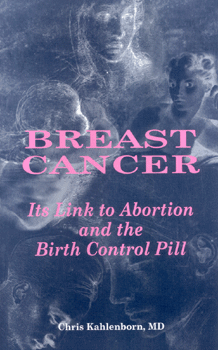






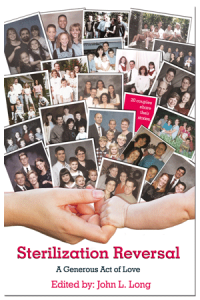







![Sterilization Reversal - A Generous Act of Love [PDF] 2003 edition](https://onemoresoul.com/files/2024/01/thumbnail_1108_789.gif)
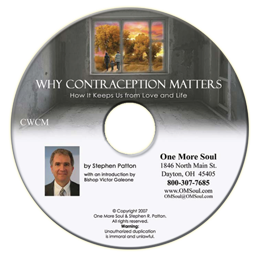

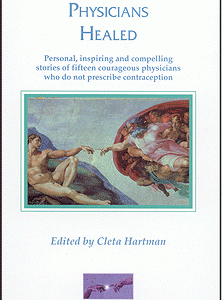
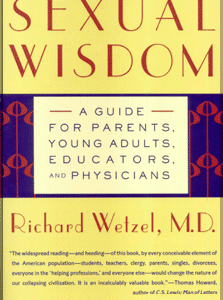

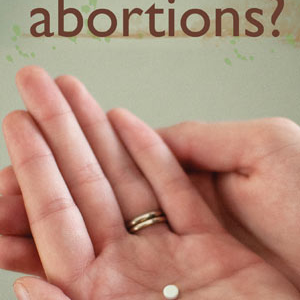


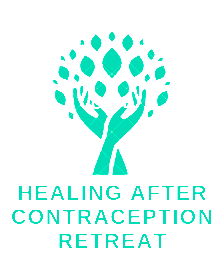
The Contraception-Divorce Connection
“…what God has joined together, no human being must separate.” Mk 10: 9
The Bible Says
“But from the beginning of creation, ‘God made them male and female. For this reason a man shall leave his father and mother [and be joined to his wife], and the two shall become one flesh.’ So they are no longer two but one flesh. Therefore what God has joined together, no human being must separate.” Mk 10:7-9
Jesus spoke these words in response to the Pharisees’ questions about divorce—in particular Moses’ allowance of a decree of divorce. The 40-50% divorce rate in the USA indicates that Jesus’ teaching that “no human being must separate” husband and wife is largely ignored.
“God created mankind in his image; in the image of God he created them; male and female he created them. God blessed them and God said to them: Be fertile and multiply; fill the earth and subdue it.” Gen 1: 27-28
“Let the children come to me. Do not prevent them.” Mk 10:14
The joining of love and life in marital sexual intercourse—the marriage act—is a second God-ordained joining not intended for Man to separate by contraception.
Divorce & Contraception Violate God’s Plan
US Catholics divorce and contracept at about the same rate as non-Catholics. Annulment application is commonly offered in response to divorce. For most Catholics, their teaching on contraception has been nil. It is estimated that 60-90% of annulments world-wide are granted in the USA. Also studies indicate that almost all Catholic couples contracept before and during some part of their marriage.
What the Chart Shows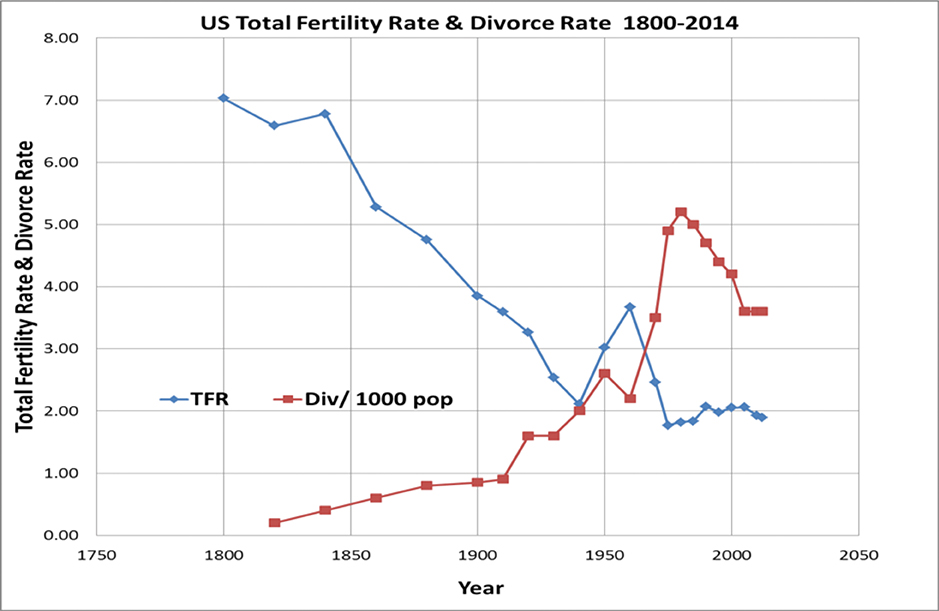
The enclosed Total Fertility & Divorce Rates chart demonstrates a strong correlation between family size and divorce. Why did family size begin a steep decline in the mid-1800s? Andrea Tone, in Devices and Desires, A History of Contraceptives in America, describes how Charles Goodyear’s 1839 invention of rubber vulcanization transformed a small but thriving side-line to sausage making into a lucrative condom manufacturing industry that continues into the 21st Century. Contraceptive use is the only feasible explanation for the rapid decline in Total Fertility Rates (TFRs) during the 19th and 20th Centuries. Note that TFRs dropped by almost half in each Century, and they have hovered a little below 2 during the 21st Century.
The Pill Effect
The Divorce Rate increased 2.5 times following wide acceptance of the Birth Control Pill in the early 1960s. No-fault divorce laws and legalized abortion were further consequences of over 10 million women being on the BCP and millions more continuing to use barrier and other means to limit child-bearing.
Marital Sexual Intercourse
In God’s first words to us, He commanded us to “be fruitful, multiply and fill the earth”—a single command stated three times. He must have thought it pretty important. In humility and trust, He surrendered to His creatures the duty and power to initiate a new human life, while retaining His right to allow that initial effort to succeed. We call that sacred act of initiation “marital sexual intercourse”.
The “marital” adjective is important because it sets marriage as the legitimate condition for use of sexual intercourse. This is based on marital sexual intercourse’s essential purpose to populate Earth and Heaven—its procreative purpose. To guarantee that we would engage in marital sexual intercourse, God added a unitive second dimension by making marital sexual intercourse delightful, enjoyable, exciting and mysterious. The unifying dimension cleverly encourages the marital sexual intercourse-performing couple to stay together for their continuing pleasure AND for mutual support in raising their children—and also God’s. Thus a family is formed!!
Why Marriage
Marriage publicly identifies the family as an institution formed by a man and woman engaging in sexual intercourse, and children that result from their union. Thus marital sexual intercourse is referred to as the “marriage act” or the “procreation act”—recognizing its essential and unique purpose of creating new human life with God. It is these procreative and unitive ends that “God has joined together [and] no human being must separate”.
Why is this so?
If the act which is primarily intended for procreation is counterfeited (neutered) by contraception, the act cannot achieve its intended and natural purposes—neither procreative nor unitive. A holy act has been hollowed out and made intrinsically evil. It should be expected that contraceptive-using-couples will feel dissatisfied, incomplete and expectant of something more. That missing more may be sought in another relationship, pornography, or other addictions. The stage is thus set for divorce.
Conclusion
The cultural chaos caused by divorce is due in large part to the effect of contraception on marriage. Separating the unitive and procreative ends of sexual intercourse redefines and destabilizes marriage. In God’s perfect plan for us, there would be no contraception, the average family would include many children, and divorce would be rare.
Has there ever been a time in history (or a culture) when both contraception and divorce were absent? What was that society like? Can a contraceptive and divorce free society be created? Can we humbly set aside our plan, and accept God’s plan for love, marriage, sex and children?
Conclusions Suggested by the Chart:
1. The “natural” Total Fertility Rate (TFR) may be as high as 7. With limited availability of contraception, the average American woman of the early 1800s birthed 7 children. Is that what God planned for average family size? The corresponding “natural” divorce rate is essentially zero.
2. The vulcanization of rubber by Charles Goodyear in 1839 jump-started the contraceptives industry with condoms and diaphragms. As contraceptives began to be readily available in the mid-1800s, TFRs rapidly declined.
3. The low TFRs during WWII (1941-1945) were followed by a jump in TFRs as millions of soldiers returned to marry and start families in 1945-1960. High divorce rates during and after WWII may be a result of long separations and mental and physical health problems of returning soldiers.
4. The advent of the Birth Control Pill (BCP) in the early 1960s and the universal acceptance of all forms of birth control soon fixed TFRs at about 2 (or less) for the 40+ years from 1970 to 2014. Divorce rates increase as TFRs decrease.
5. Rapid acceptance of the BCP in the 1960s corresponds with divorce rates more than doubling in 10 years.
6. While TFRs have held steady near 2 for the past 40 years, divorce rates have steadily declined to 1960’s levels possibly due to slow economic growth, fewer marriages reducing the pool of potential divorces, and aging couples’ greater tolerance of a less than ideal marriage.
7. Contraceptive use destabilizes and redefines marriage.
Source fertility rate data: http://www.gapminder.org/data
Source divorce rate data: U.S. Census Bureau: Statistical Abstract of the United States for 2001 (Table 117), available online at www.census.gov/prod/www/abs/statab.html; Current Population Report for 2000 (Table 3), available online at www.census.gov/cps; Centers for Disease Control and Prevention: “Births, Marriages, Divorces, and Deaths: Provisional Data” for 2000 (in National Vital Statistics Report 49) and 2009 (in NVS Report 58) (Table 2), available online at www.cdc.gov/nchs/products/nvsr.htm
Ver en español aquí
Posted in Contraception, Featured, News & Commentary | No Comments »